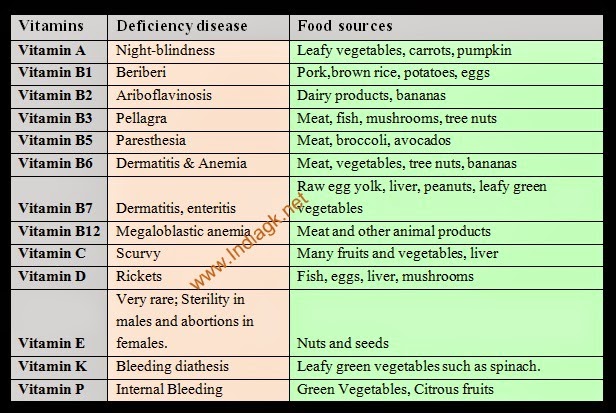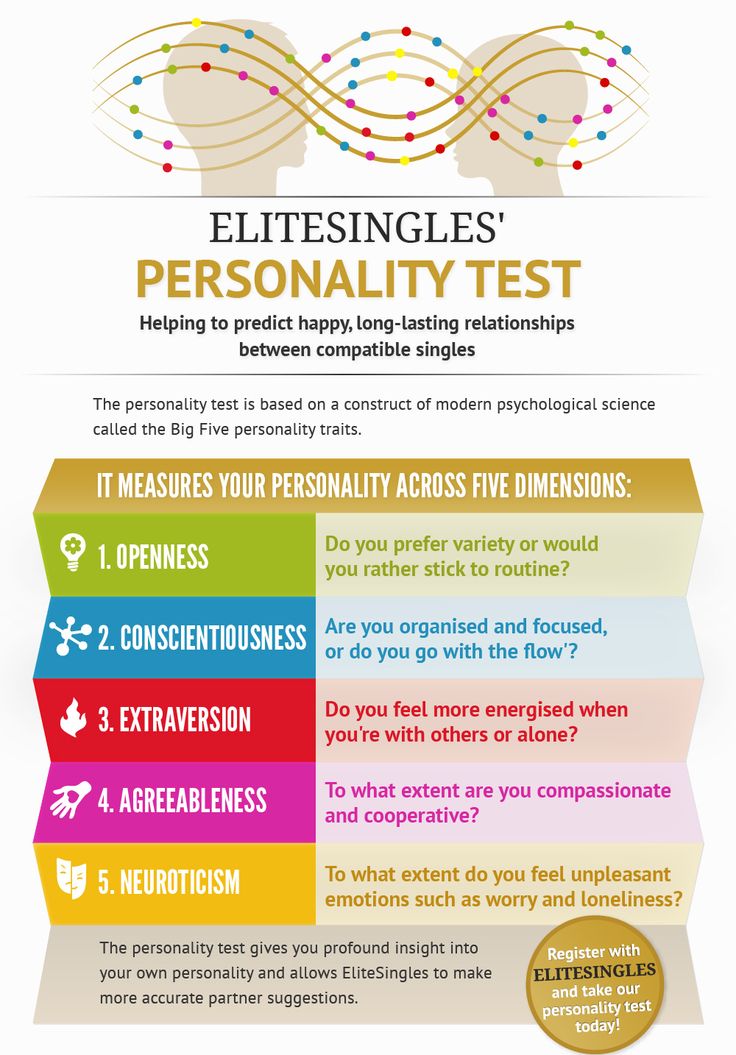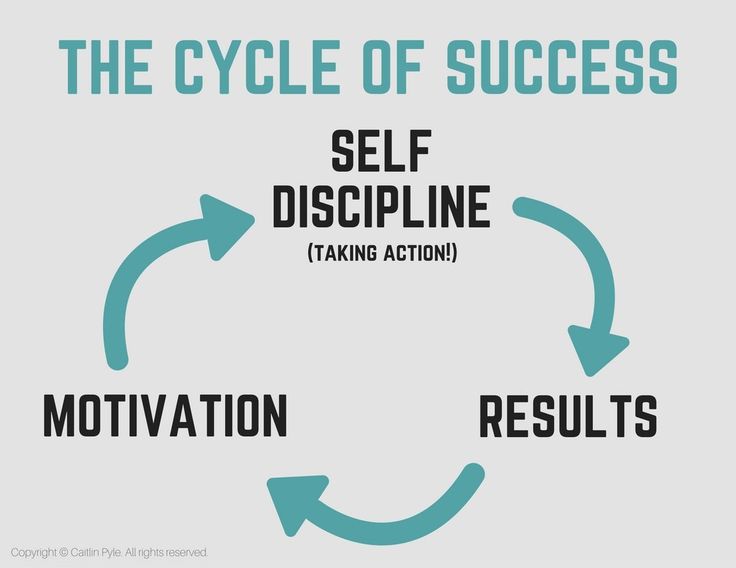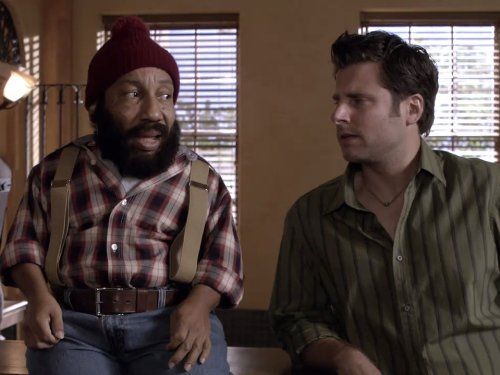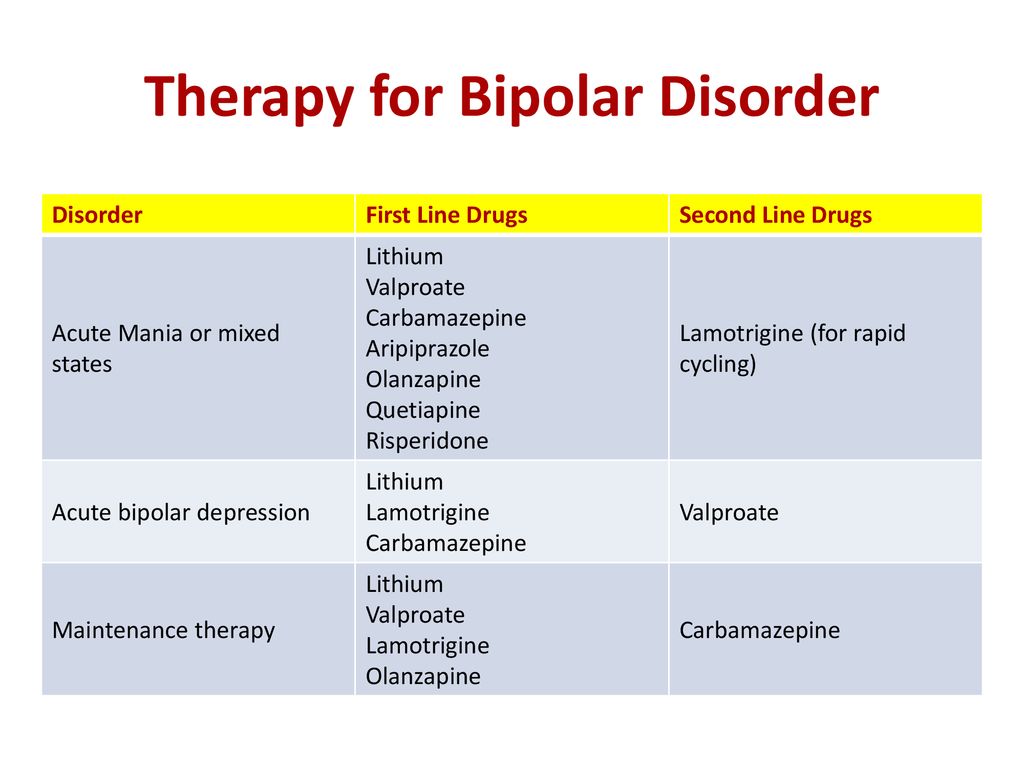Acronyms for remembering the planets
Tricks to Remember the Planets
Posted on by Nancy Atkinson
Need an easy way to remember the order of the planets in our Solar System? The technique used most often to remember such a list is a mnemonic device. This uses the first letter of each planet as the first letter of each word in a sentence. Supposedly, experts say, the sillier the sentence, the easier it is to remember.
So by using the first letters of the planets, (Mercury, Venus, Earth, Mars, Jupiter, Saturn, Uranus, and Neptune), create a silly but memorable sentence.
Here are a few examples:
- My Very Excellent Mother Just Served Us Noodles (or Nachos)
- Mercury’s Volcanoes Erupt Mulberry Jam Sandwiches Until Noon
- Very Elderly Men Just Snooze Under Newspapers
- My Very Efficient Memory Just Summed Up Nine
- My Very Easy Method Just Speeds Up Names
- My Very Expensive Malamute Jumped Ship Up North The Sun and planets to scale.
Credit: Illustration by Judy Schmidt, texture maps by Björn Jónsson
If you want to remember the planets in order of size, (Jupiter, Saturn, Uranus, Neptune, Earth, Venus Mars, Mercury) you can create a different sentence:
- Just Sit Up Now Each Monday Morning
- Jack Sailed Under Neath Every Metal Mooring
Rhymes are also a popular technique, albeit they require memorizing more words. But if you’re a poet (and don’t know it) try this:
Amazing Mercury is closest to the Sun,
Hot, hot Venus is the second one,
Earth comes third: it’s not too hot,
Freezing Mars awaits an astronaut,
Jupiter is bigger than all the rest,
Sixth comes Saturn, its rings look best,
Uranus sideways falls and along with Neptune, they are big gas balls.Or songs can work too. Here are a couple of videos that use songs to remember the planets:
If sentences, rhymes or songs don’t work for you, perhaps you are more of a visual learner, as some people remember visual cues better than words. Try drawing a picture of the planets in order. You don’t have to be an accomplished artist to do this; you can simply draw different circles for each planet and label each one. Sometimes color-coding can help aid your memory. For example, use red for Mars and blue for Neptune. Whatever you decide, try to pick colors that are radically different to avoid confusing them.
Or try using Solar System flash cards or just pictures of the planets printed on a page (here are some great pictures of the planets). This works well because not only are you recalling the names of the planets but also what they look like. Memory experts say the more senses you involve in learning or storing something, the better you will be at recalling it.
Planets made from paper lanterns.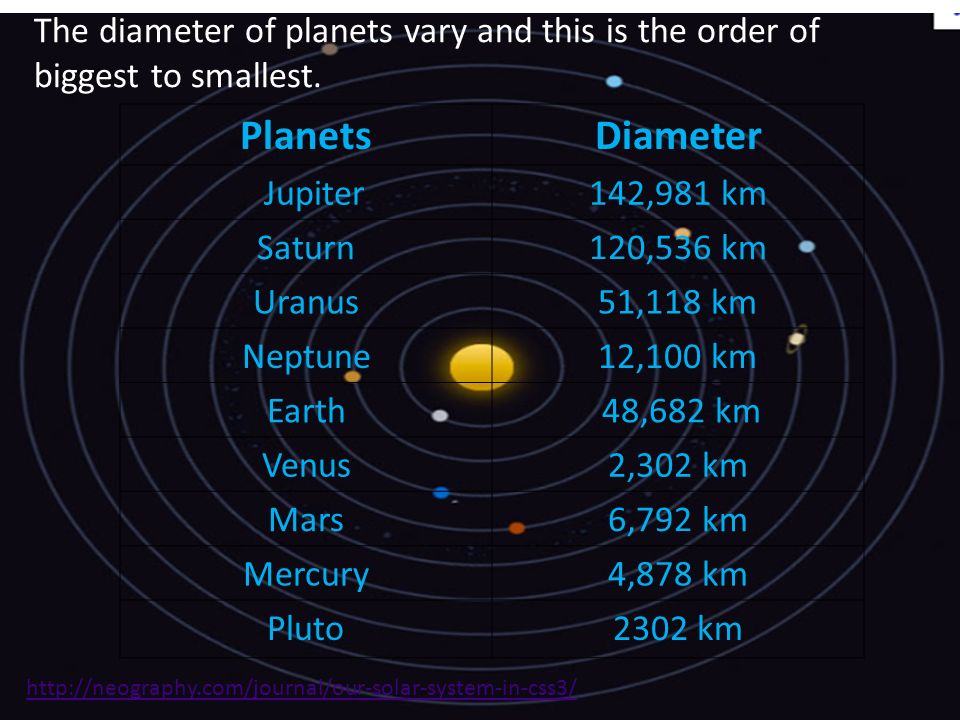 Credit: TheSweetestOccasion.com
Credit: TheSweetestOccasion.comMaybe you are a hands-on learner. If so, try building a three-dimensional model of the Solar System. Kids, ask your parents or guardians to help you with this, or parents/guardians, this is a fun project to do with your children. You can buy inexpensive Styrofoam balls at your local craft store to create your model, or use paper lanterns and decorate them. Here are several ideas from Pinterest on building a 3-D Solar System Model.
If you are looking for a group project to help a class of children learn the planets, have a contest to see who comes up with the silliest sentence to remember the planets. Additionally, you can have eight children act as the planets while the rest of the class tries to line them up in order. You can find more ideas on NASA’s resources for Educators. You can use these tricks as a starting point and find more ways of remembering the planets that work for you.
If you are looking for more information on the planets check out Universe Today’s Guide to the Planets section, or our article about the Order of the Planets, or this information from NASA on the planets and a tour of the planets.
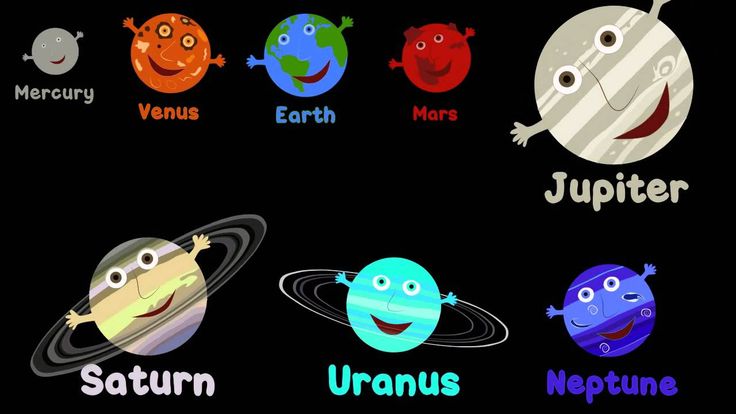
Universe Today has numerous articles on the planets including the planets and list of the planets.
Astronomy Cast has an entire series of episodes on the planets. You can get started with Mercury.
Like this:
Like Loading...
CategoriesAstronomy, Earth, Guide to Space, Mars, Mercury, NASA, Neptune, Saturn, sun, Uranus, VenusTagsmnemonic device, planets, Solar SystemHow to Remember the Planets in Order
"How many planets are there?"
People of a certain age will instinctively respond "Nine!" to this question, because between 1930, when Pluto was discovered, and 2006, when it was re-designated a dwarf planet, this was the unequivocally correct answer. That the Earth is one of nine planets orbiting the sun at vast distances from the sun and each other was a fact taught to students worldwide, often as early as elementary school. If you didn't know much else about the solar system, you were still bound to know how many planets there are.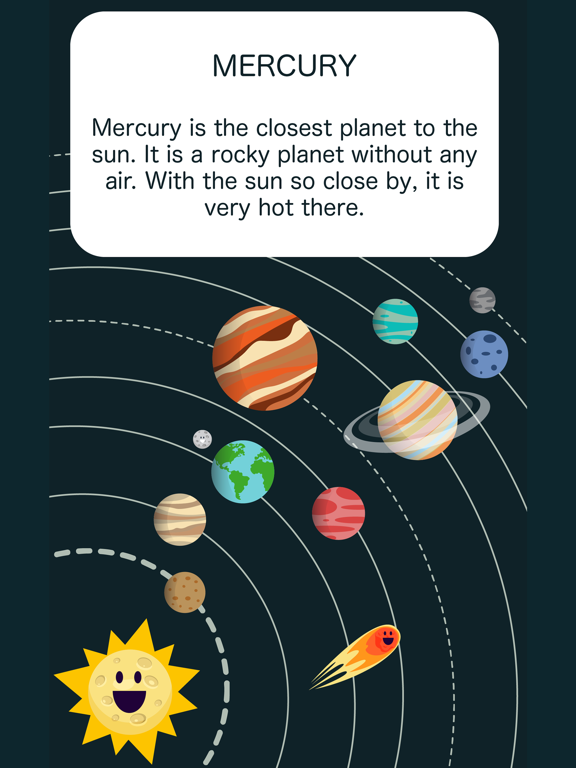 Especially curious students endeavored to learn the names of these planets, too, and some details about each.
Especially curious students endeavored to learn the names of these planets, too, and some details about each.
One helpful thing is that when people learn the names of the planets, they usually learn them in order from innermost to outermost, that is, in order of increasing distance from the sun. If you have a hard time recalling the names of the planets in order with no other context, a memorization device called a mnemonic, which often evokes unrelated humorous images to add flavor to the topic at hand, can come in very handy. Many clever planetary mnemonics are already in circulation, but that shouldn't keep you from inventing your own clever mnemonic for planets.
What Order Do the Planets Go in From the Sun?
Mercury, Venus, Earth, Mars, Jupiter, Saturn, Uranus, Neptune.
Some people can simply memorize this one-line poem of sorts and be done with the exercise, and they do not require a special trick for keeping the solar system order straight in their minds.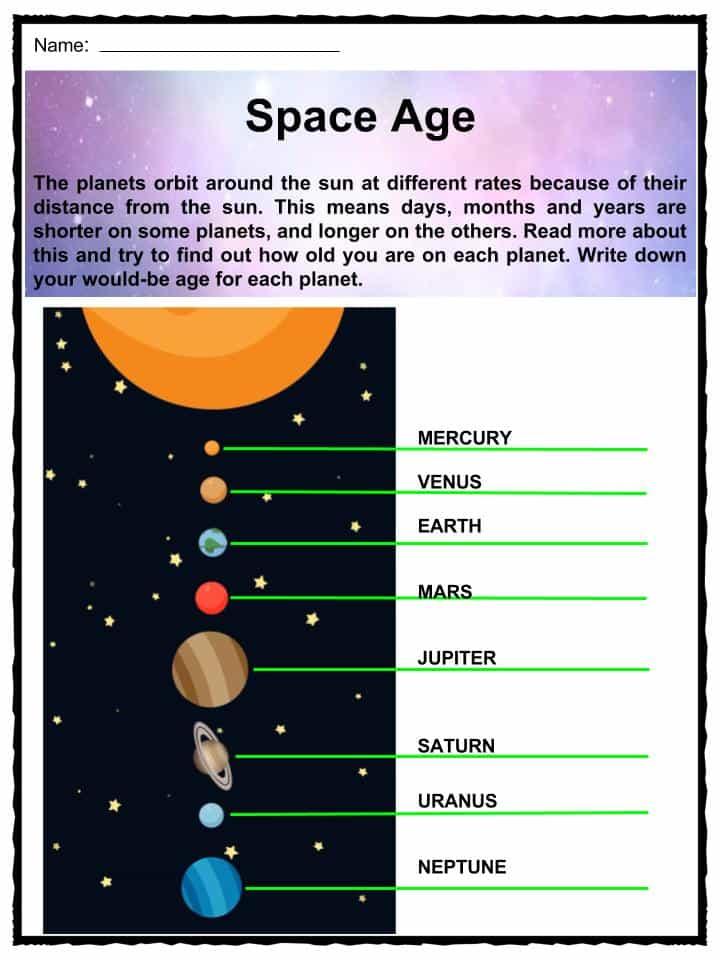 Others can benefit either from an acronym for planets or from a sentence consisting of eight words whose first letters are the same of the first letters of the planets in order from Mercury to Neptune. Before this is explored, a basic treatment of the solar system as a whole is instructive.
Others can benefit either from an acronym for planets or from a sentence consisting of eight words whose first letters are the same of the first letters of the planets in order from Mercury to Neptune. Before this is explored, a basic treatment of the solar system as a whole is instructive.
The solar system includes the sun (the ancient Roman called the sun "Sol") and everything that orbits, or revolves around, the sun owing to the force of the sun's gravitational field. These objects include planets, moons, asteroids, meteors, comets and meteoroids, in generally descending order of size. The innermost four planets (Mercury, Venus, Earth and Mars) are known as the terrestrial planets because they are made chiefly of rock. Between Mars and Jupiter lies the asteroid belt, a well-clustered ring of orbiting material that includes some 750,000 so-called minor planets. The remaining four (for now!) planets (Jupiter, Saturn, Uranus and Neptune) are referred to as the gas giants, or sometimes the Jovian planets.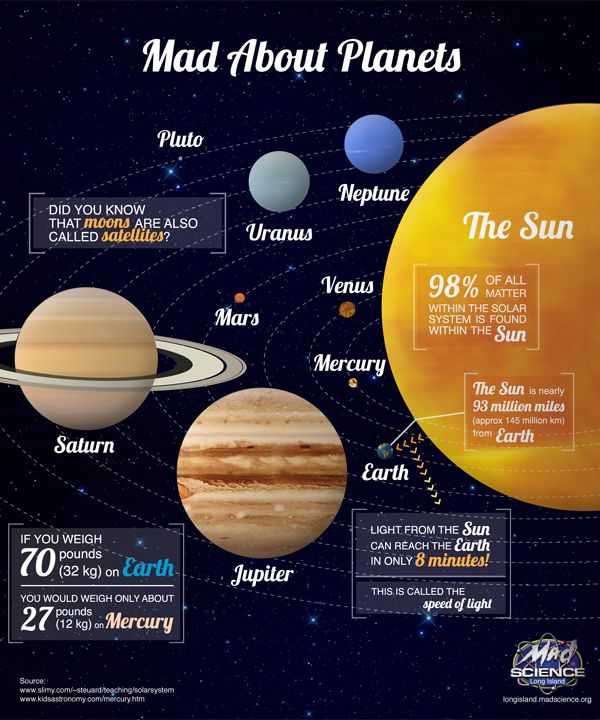 ("Jovian" is derived from "Jupiter," the largest planet and probably the most famous of the gas giants.)
("Jovian" is derived from "Jupiter," the largest planet and probably the most famous of the gas giants.)
The solar system's accepted outer boundary is about 9 billion miles from the sun. The Earth is about 93 million miles from the sun, meaning that the outer reaches of the solar system are almost 100 times as far from the sun as the Earth is. Since light travels at about 186,000 miles per second (186,282 miles per second to be exact), light from the sun takes over 13 hours to reach the outer limits of the solar system. But if 9 billion miles sounds like a great distance, bear in mind that light from the sun takes over four years to reach the next-nearest star.
The planets are named after the famous gods of the ancient Greek and Roman cultures.
Mercury (Greek god name Hermes) was the messenger god. That the innermost planet was named after a god that had to be swift on foot is no accident, because from the vantage point of Earth, Mercury, with its small orbit (43 million miles from the sun) and consequently short year (88 days), appears to zip back and forth across the sky with great speed compared to the other four visible planets. (Can you guess what those are based on information already provided?) Mercury is only a little larger than the Moon, about one-third Earth's diameter.
(Can you guess what those are based on information already provided?) Mercury is only a little larger than the Moon, about one-third Earth's diameter.
Venus (Aphrodite) is the hottest planet despite being considerably farther from the sun than Mercury, orbiting the sun at a distance of 67 million miles. It is the nearest planet to Earth and is the brightest in the sky, in part because of its closeness but also because its methane-rich, dense atmosphere traps heat superbly. It is slightly smaller than Earth, but the conditions on its surface are radically different.
Earth, which you are likely to remember on your own, is included here for completeness. It orbits the sun at an average distance of 93 million miles. It is a sheer accident of astronomical geometry that the disk of the sun and the disk of the moon appear to be almost exactly the same size in the Earth sky.
Mars (Ares) is often called "the Red Planet" for the color that easily distinguishes it from the rest of the planetary herd. At almost 129 million miles from the sun, Mars takes nearly two Earth years to orbit the sun. It is believed to have once held significant amounts of water, a precondition for life, and has been the subject of intense exploration by probes as well as the center of lots of science-fiction tales.
At almost 129 million miles from the sun, Mars takes nearly two Earth years to orbit the sun. It is believed to have once held significant amounts of water, a precondition for life, and has been the subject of intense exploration by probes as well as the center of lots of science-fiction tales.
Jupiter (Zeus) is the first of the gas giants and by far the largest object in the solar system besides the sun itself, weighing twice as much as the other planets combined. As of mid-2018, 79 moons had been confirmed orbiting the planet famed for the Bright Red Spot in its southern hemisphere. Incredibly, this enormous object 500 million miles from the sun takes only 10 hours to complete a single rotation.
Saturn (Cronos) is known for its elegant rings. All of the gas giants have rings, but Saturn's are visible using a decent pair of binoculars when they are not angled directly toward Earth. It is the most distant planet visible to the naked eye, and thus the farthest one known to the ancients. Its rings were discovered in the 1600s by Galileo.
Its rings were discovered in the 1600s by Galileo.
Uranus (Caelus), discovered in 1781, takes 84 Earth years to revolve around the sun. It is notable for its 11 small rings, its bluish hue and the fact that its axis of rotation is nearly horizontal, as if it had been knocked over. In fact, some astronomers believe a collision with another large object early in its history is responsible for this tilt.
Neptune (Poseidon), though 2.7 billion miles from the sun, is less than a third of the way out to the edge of the solar system. Because Neptune takes 165 Earth years to orbit the sun, it has completed only one revolution around the sun since its discovery in 1811. It is believed to be the windiest of the eight planets.
What Is a Mnemonic Device to Remember the Planets?
Though a difficult word to spell and pronounce at first, a mnemonic, as noted, is a trick used for recalling information in a list that in isolation may be hard to remember.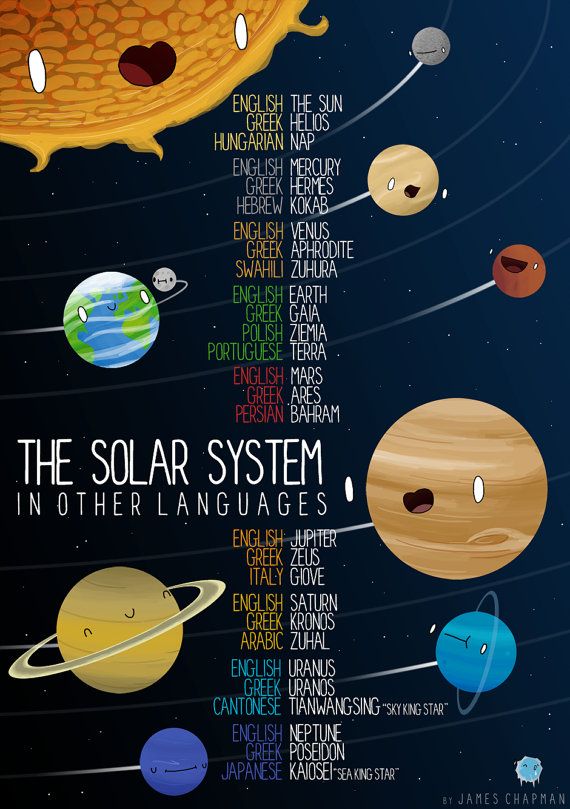 One such list is the 12 cranial nerves, many of which have long and confusing names. If medical students have a way to remember only the first letters of these nerves, this information can in turn trigger the full name of each nerve, in order.
One such list is the 12 cranial nerves, many of which have long and confusing names. If medical students have a way to remember only the first letters of these nerves, this information can in turn trigger the full name of each nerve, in order.
The first letters of the planets are
M V E M J S U N
The first thing you many notice here is that, alas, these letters do not form a word or at least something that can be pronounced as, and therefore, become a word. (Contrast this with "NASA," "laser" and "sonar," all of which are acronyms – words created from the first letters of a term that fully describes them.)
Perhaps the most popular planetary mnemonic is "My Very Educated Mother Just Served Us Noodles." This was adapted from "My Very Educated Mother Just Served Us Nine Pizzas" after Pluto's change of status required an adaptation to this 70-year-old mnemonic. Mike Brown, an astronomy professor at CalTech, came up with "Mean Very Evil Men Just Shortened Up Nature" as a nod to his personal feelings about the Pluto demotion.
Some fans of wordplay and astronomy have anticipated that Pluto might eventually be returned to enjoying planet status, and there have been calls to restore it to its previous planetary position. If this happens, it might require the other known dwarf planets – Ceres in the asteroid belt; and Haumea, Makemake and Eris, all in the Kuiper belt beyond Pluto – to be considered planets as well. This would necessitate a new mnemonic, one with 12 words instead of eight. One pithy suggestion offered by a reader of the New York Times:
"My Very Educated Mother, Crying, Just Served Us Nine Pizzas, Heating My Esophagus."
For now, you need only remember eight words, and the best mnemonic is perhaps one you create yourself and it therefore especially memorable. A word of caution about mnemonics as a rule: Keep them as simple as you can, or you may need a mnemonic to remember your mnemonic!
Is Pluto a Planet?
Pluto was treated for years as an oddity among planets for a variety of reasons, but its status as a planet was never controversial until other objects reminiscent of Pluto but in no danger of themselves being called planets began to accumulate in the astronomy world.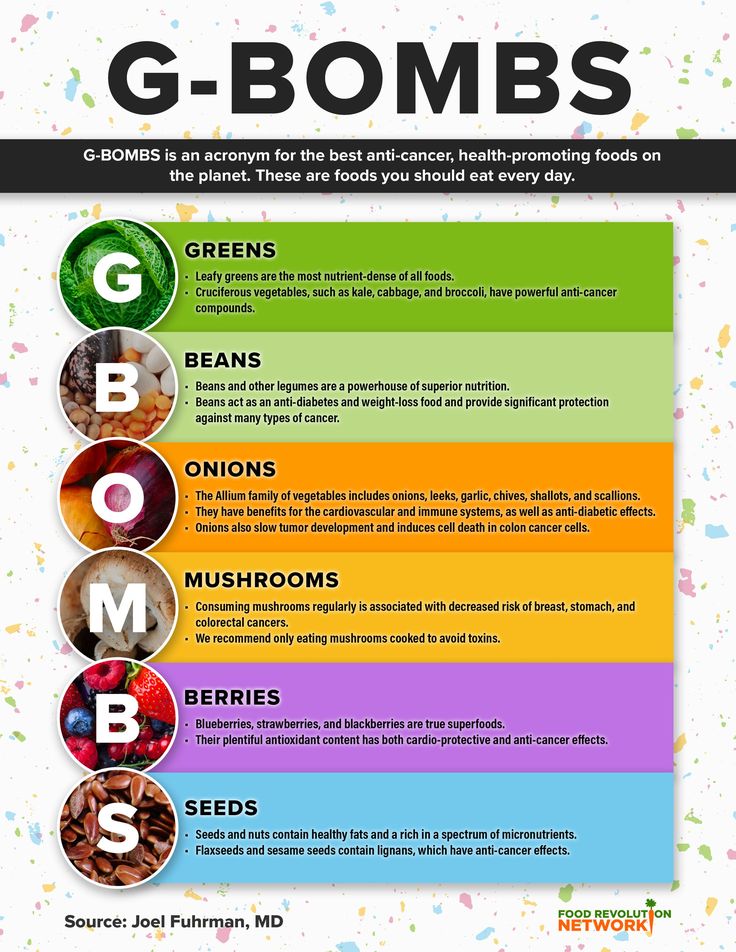 It is smaller than the Moon, yet it has five satellites of its own. The largest, Charon, is almost half the size of Pluto, making the pair more of a double-planet system than a planet- (or dwarf-planet-) moon system.
It is smaller than the Moon, yet it has five satellites of its own. The largest, Charon, is almost half the size of Pluto, making the pair more of a double-planet system than a planet- (or dwarf-planet-) moon system.
Notably, the orbit of Pluto is so elliptical, or oval-shaped, that it sometimes strays inside Neptune's orbit (this last happened between 1979 and 1999). This meant that when Pluto was a planet, it wasn't always the farthest from the sun, thereby scuttling the normally memorized order on a technicality.
When Pluto was downgraded by the International Astronomy Union (IAU) to a dwarf planet in 2006, other objects in the solar system enjoyed an upgrade. Among these was Ceres, the largest of the 750,000 asteroids. Still, although it is believed to account for a third of the mass of the entire asteroid belt, Ceres is 14 times smaller than Pluto.
Of the three dwarf planets more distant from Pluto, Haumea is the closest and takes 285 Earth-years to orbit the sun.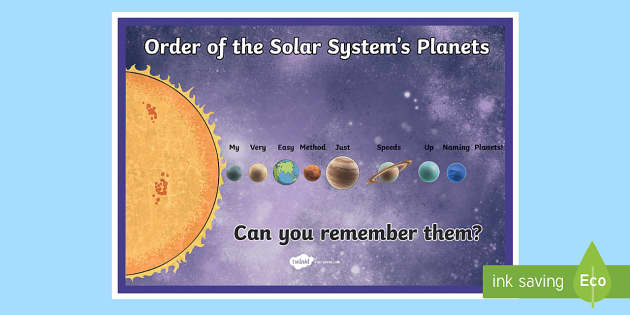 It is one-fourteenth the size of Earth. Makemake is next, taking 310 Earth-years to revolve around the sun; discovered in 2005, it is nearly as large as Pluto. Finally, Eris, the most distant known dwarf planet, is a staggering three times farther from the sun as Pluto. Also discovered in 2005, its being similar in size to Pluto touched off the beginning of serious debate about Pluto's status as a planet.
It is one-fourteenth the size of Earth. Makemake is next, taking 310 Earth-years to revolve around the sun; discovered in 2005, it is nearly as large as Pluto. Finally, Eris, the most distant known dwarf planet, is a staggering three times farther from the sun as Pluto. Also discovered in 2005, its being similar in size to Pluto touched off the beginning of serious debate about Pluto's status as a planet.
All other considerations aside, the assigning of a different label to Pluto has simplified the task of remembering the order of the planets, because they now align themselves naturally in symmetrical groups of four – the terrestrials on the inside, and the gas giants on the outside.
The solar system for children: planets, satellites, stars, systems
This short article presents material on the topic: the solar system for children. In a simple and understandable language, we described the solar system, the planets that are in it, and many other interesting things.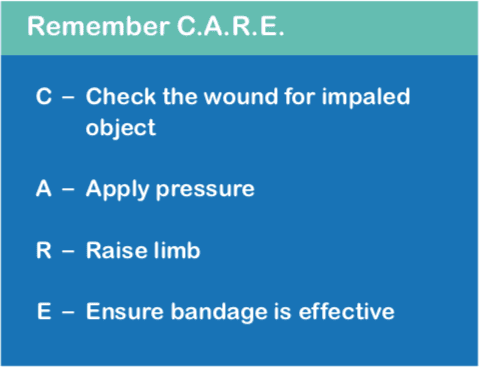
There are many objects in the Universe, including planets and satellites, stars and systems, as well as galaxies. The solar system, in which our planet Earth is located, is also full of both planets, satellites, and asteroids, comets, and many other interesting objects. To date, scientists suggest that our solar system was formed from a giant cloud of gas and dust. It has 8 planets, which are divided into 2 groups - the inner planets (they are also terrestrial planets). This group includes Mercury, Venus, Earth (the third planet from the Sun) and Mars. And the outer planets or gas giants: Jupiter, Saturn, Uranus and Neptune.
Between these two groups lies the asteroid belt. And behind the gas giants are trans-Neptunian objects. The largest of which is Pluto. Previously, Pluto was considered an ordinary planet, but now it is ranked among the dwarf planets and at the same time the largest object in the Kuiper belt.
The Kuiper belt - similar to the asteroid belt, but differs in that it is 20 times wider than it, as well as in its composition.
How to remember the planets and their order?
Short mnemonic phrases, they are also mnemonics, facilitate the memorization of various information by forming artificial associations.
On this page we have collected memoirs of the planets of the solar system for children, which will make this, sometimes, not an easy task easier. The only caveat is that when they came up with Pluto, they attributed it to the planets, and therefore it is present in almost all memos. And as we know, since 2006, Pluto has been considered a dwarf planet, and now, when memorizing, it can be omitted.
Memorizing the planets of the solar system
Memorize the order of the planets of the solar system (Mercury, Venus, Earth, Mars, Jupiter, Saturn, Uranus, Neptune, Pluto) by the first letters of the words M-Mercury V-Venus Z-Earth M-Mars Yu -Jupiter S-Saturn U-Uranus N-Neptune P-Pluto in phrases:
- We Know - Yulia's Mom Sat On Pills In The Morning!
- Bear Cub Ate Raspberry Ham, Nimble Gopher Dragged Pen Knife.
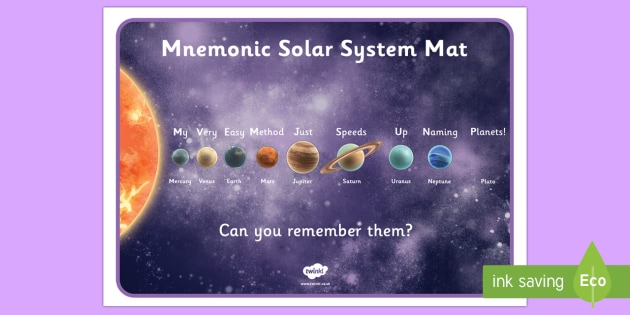
- On a Frosty Evening Climbed onto Jung's Mast Aiming to See an Unfamiliar Port.
- Mother Always Forbade Me Young Pathfinder to Know the Names of the Planets.
- The Sea Wolf Tormented the Young Jung, Completely Tiring the Unfortunate Guy.
- We'll Meet Tomorrow, My Young Companion, Near the New Planet.
- Wise Sorceress Golden-domed Fashionista of the Southern Countries Takes a great interest in the Newest Poetry.
- We All Know: Many Young Marmots Learn the Names of the Planets.
- You Can Fly Beyond Mars By Jewelery Turning Near Our Planet.
- Mom Cooks Strawberry Juice, and Young Son Doesn't Cry Anymore.
- Venya measured the Earth with Marusin's Skirt, Satin and Uranium, He is a rogue.
- A gloomy venereal disease can briskly defeat a tired nymphomaniac.
- Least Seen Mary of the Southern Sun Smile on the Beach.
- Slowly Carries the Earth Little Peter; The garden is decorated with Unbreakable Plafonds (the mnemonic of the planets by Alexei Golovnin).
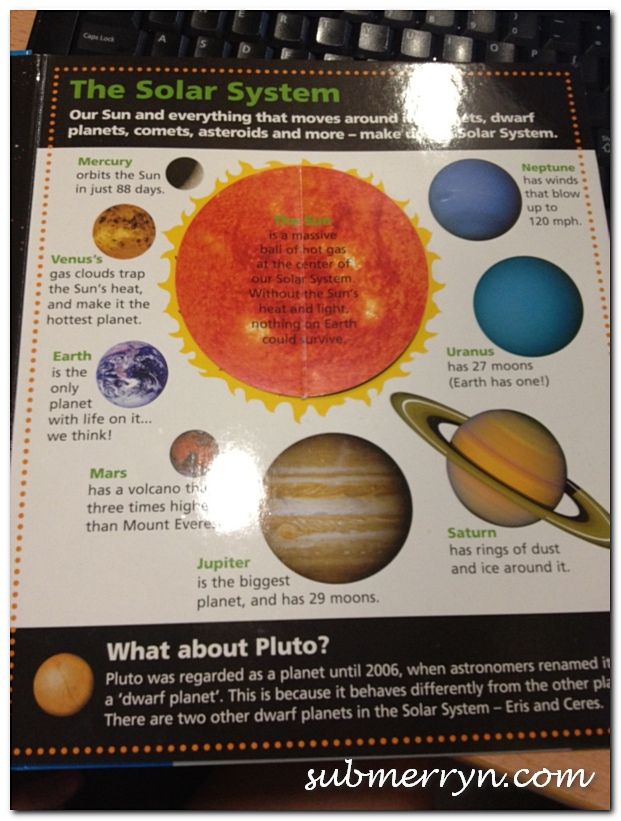
- Dreaming of Getting Married, Little Skirt Remove - Smile Should and Kiss.
Memorizing the order of the planets with the asteroid belt
Masha with Venik the Chalk Land, and Yura Sat at the Spider's Burrow.
That is, the letter "A" was added in this phrase - the Asteroid belt.
Memorization of the planets from the most distant planet (Pluto) to the nearest one (Mercury) to the Sun
Planets It is not difficult to remember the youngest kid, Knowing Venus, Mercury.
Poems for memorizing the planets
The hare darted between the wolves;
In order, all the planets
Any of us will name.
One Mercury, two Venus,
three Earth, four Mars.
Five Jupiters, six Saturns,
Seven Uranus followed by Neptune.
He is the eighth in a row,
and only then
and the ninth planet called Pluto
An astrologer lived on the Moon
He kept records of the planets:
MERCURY - one,
VENUS - two-s,
Three - EARTH,
Four - MARS,
Five - JUPITER,
Six - SATURN,
Seven - URANUS,
Eight - NEPTUNE,
Nine - the farthest PLUTO,
Who does not see - get out!
Memory verse for 8 planets without Pluto
Mercury - one, Venus - two-s,
Three - Earth, four - Mars,
Five - Jupiter, six - Saturn,
Seven - Uranus, eighth - Neptune
White verse for memorizing the order of the planets
Measuring the age of the earth is small
the youth of the wretched garden
no fruit
Other ways of memorizing the order of the planets of the solar system for children and adults
Another way to remember the order of the planets is to compare with other, but similar words and compose suggestions using them.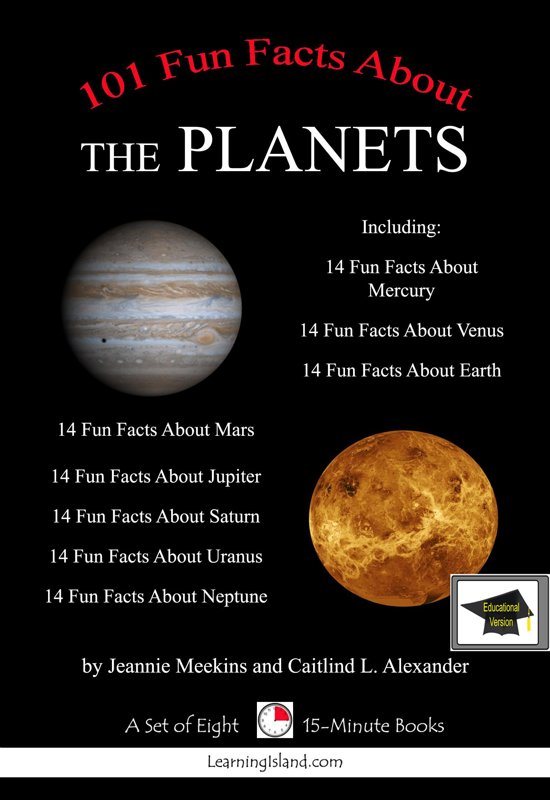
For example: My friend Venus (Venus) on Earth (Earth) fades (Mercury). Because she ate Mars (Mars), which was lying on a music stand (Jupiter), and threw the wrapper into a full, that is, a full urn (Saturn), after shouting "Hurrah" (Uranus). And not a vocational school (Neptune), but she graduated from the institute, later escaping with some rogue (Pluto).
Between the two gods with the letter M: Mercury and Mars, there are 2 women: Venus and Earth. Behind the god Mars is his father - Jupiter. Behind the supreme god Jupiter is a planet unique in its rings - Saturn. In the name Saturn, both Saturn (SAT) and the subsequent planets: Uranus (UR) and Neptune (N) are encrypted. Following them, Pluto is not a planet, but looks like Pluto's dog, looking in bewilderment at the pantheon of Greek gods in front of him.
Acronyms for memorizing the planets
Another way to learn the order of the planets is to use an acronym - that is, an abbreviation that is formed by the first sounds of words in a phrase.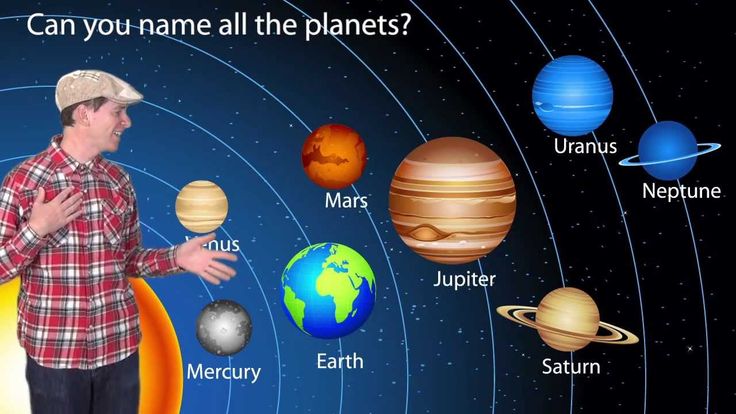 That is, this is a word that can be pronounced together, while it is an abbreviation. To memorize the planets, you can remember the acronym: MeVeZeMa YUSUNP.
That is, this is a word that can be pronounced together, while it is an abbreviation. To memorize the planets, you can remember the acronym: MeVeZeMa YUSUNP.
Do you also know of any interesting memos or original ways of memorizing the planets of the solar system? Write them in the comments.
how interesting it is to talk about space and planets
It is impossible to say exactly at what age it is necessary to start studying the planets of the solar system with a child. After all, everything is very individual, and depends on the ability of a child of this age to perceive information. The story about should be built on observations of the stars in the night sky and reading adapted literature.
At 4-5 years old, you can introduce a small amount of information in a playful way by buying him a colorful encyclopedia for children about the planets. The child will be able to visually distinguish different luminaries from the pictures, and eventually look for their location in the sky, if parents manage to interest him.
Sun
Yes, yes, the kid is surprised to learn that the sun, which warms him with its rays, is actually also a planet. That is why the system is called solar, because all other celestial bodies revolve around it. Not without reason, all the peoples who lived on our land many centuries ago, revered the Sun as a deity, and gave it various names - Ra, Yarilo, Helios. The surface of the hottest planet is 6000 ° C, and no one and nothing can survive near it.
Mercury
A story about the planet Mercury for children may be of interest to them because in the early morning and immediately after sunset, it can be seen in the sky with the naked eye. This is possible due to the fact that it is located at a relatively small distance from the Earth, and also because of its natural brightness during these hours. For this unique quality, the planet received the second name of the Morning Star.
Venus
It turns out that the Earth has a twin sister, and this is Venus - a planet interesting for children because in its composition and surface it resembles our planet in many ways, although it is not possible to study it well due to the very aggressive atmosphere around it , and a hot surface on which you can literally burn out.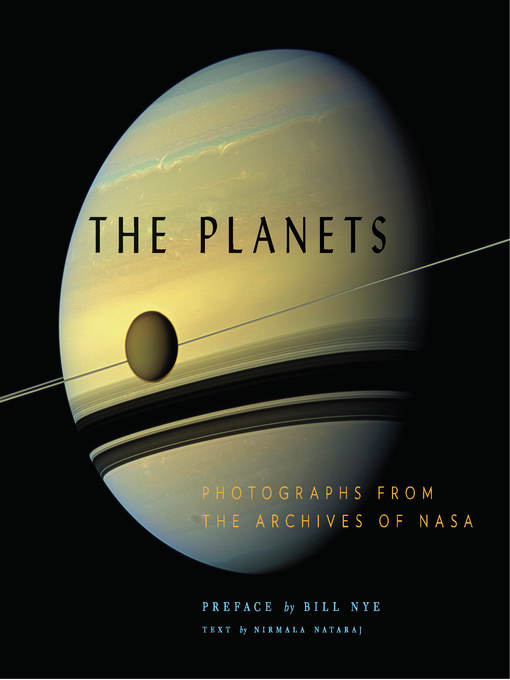
Venus is the third brightest planet in the system, and its surface emits carbon dioxide and sulfuric acid, making it uninhabitable despite its similarity to Earth.
Ground
For children, the planet Earth is the most understandable of all, since we all live directly on it. This is the only celestial body inhabited by living beings. It is the third largest in size, and has one satellite - the Moon. Also, our land has the most diverse relief, which noticeably distinguishes it from the sworn brothers.
Mars
Planet Mars for children may be associated with the bar of the same name, but it has nothing to do with sweets. Scientists have proven that once Mars was inhabited, and thanks to spacecraft, evidence was found in the form of frozen rivers that flowed here. Mars is called the red planet because of its color. It is located in fourth place in terms of distance from the Sun.
Jupiter
Children will remember Jupiter as the largest planet in the solar system.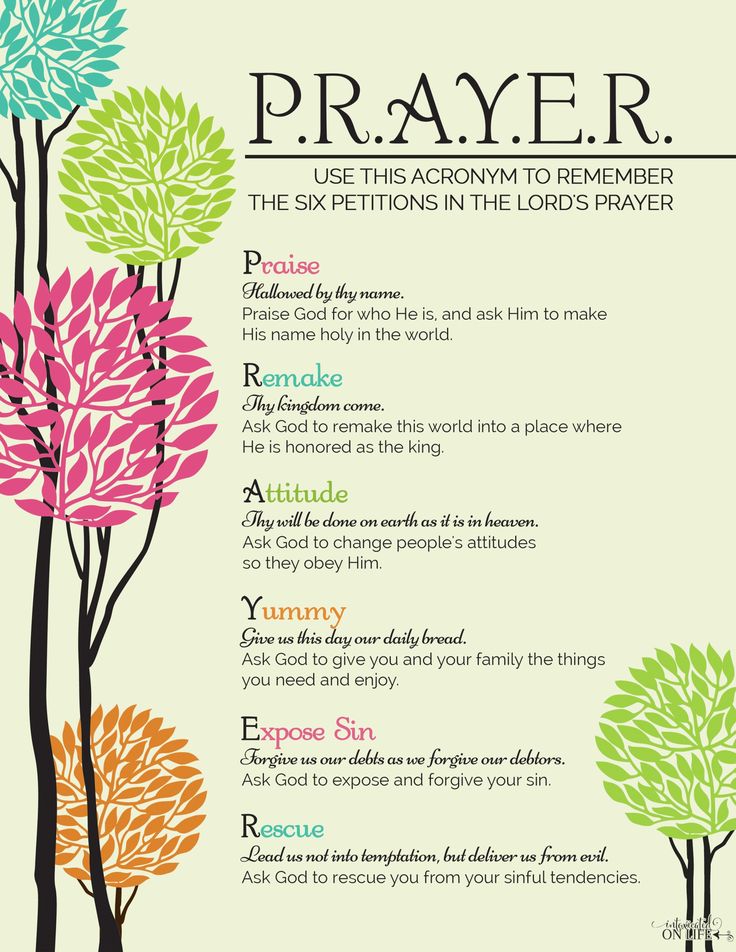 It looks like a striped ball, and storms constantly rage on its surface, lightning flashes and winds blow at a speed of 600 km / h, which makes it very harsh compared to Earth.
It looks like a striped ball, and storms constantly rage on its surface, lightning flashes and winds blow at a speed of 600 km / h, which makes it very harsh compared to Earth.
Saturn
The planet Saturn, familiar from pictures for children, looks like a hat or a ball in a striped skirt. In fact, this is not a skirt at all, but the so-called ring system, which consists of dust, stones, solid cosmic particles and ice.
Uranium
The planet Uranus may remind children of Saturn, but only blue and the rims around it are not horizontal, but vertical. In the solar system, this planet is the coldest, because the temperature on it reaches -224 ° C.
Neptune
Another icy giant planet is Neptune, which for children is associated with the ruler of the seas, and it is named after him. The unrealistic wind speed of 2100 km/h makes it very scary and harsh compared to our flourishing and warm Earth.
But the dwarf planet Pluto was recently expelled from the solar system due to its size mismatch.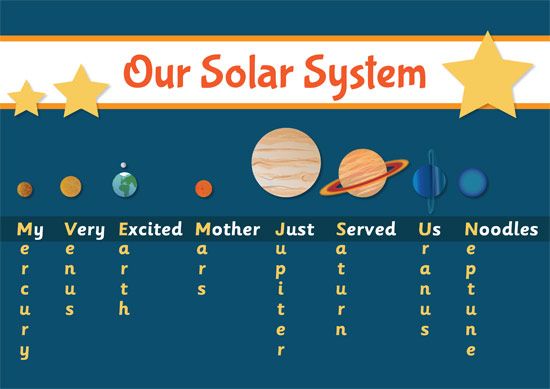
Articles on topic:
This short note presents material on the topic: the solar system for children. In a simple and understandable language, we described the solar system, the planets that are in it, and many other interesting things.
There are many objects in the Universe, including planets and satellites, stars and systems, and galaxies. The solar system, in which our planet Earth is located, is also full of both planets, satellites, and asteroids, comets, and many other interesting objects. To date, scientists suggest that our solar system was formed from a giant cloud of gas and dust. It has 8 planets, which are divided into 2 groups - the inner planets (they are also terrestrial planets). This group includes Mercury, Venus, Earth (the third planet from the Sun) and Mars. And the outer planets or gas giants: Jupiter, Saturn, Uranus and Neptune.
Between these two groups lies the asteroid belt. And behind the gas giants are trans-Neptunian objects.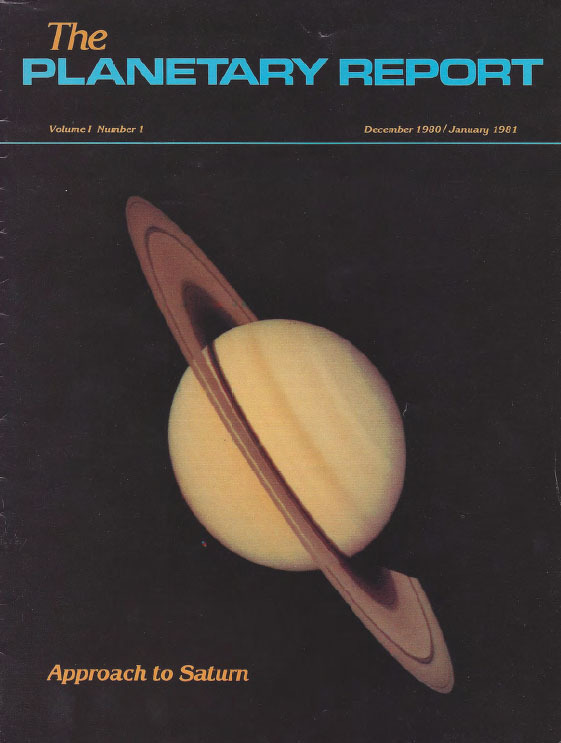 The largest of which is Pluto. Previously, Pluto was considered an ordinary planet, but now it is ranked among the dwarf planets and at the same time the largest object in the Kuiper belt.
The largest of which is Pluto. Previously, Pluto was considered an ordinary planet, but now it is ranked among the dwarf planets and at the same time the largest object in the Kuiper belt.
The Kuiper belt - similar to the asteroid belt, but differs in that it is 20 times wider than it, as well as in its composition.
Solar system
How to remember the planets and their order?
Short mnemonic phrases, also known as mnemonics, make it easier to memorize various information by forming artificial associations.
On this page we have collected memoirs of the planets of the solar system for children, which will make this, sometimes, not an easy task easier. The only caveat is that when they came up with Pluto, they attributed it to the planets, and therefore it is present in almost all memos. And as we know, since 2006, Pluto has been considered a dwarf planet, and now, when memorizing, it can be omitted.
Memorizing the planets of the solar system
Memorize the order of the planets of the solar system (Mercury, Venus, Earth, Mars, Jupiter, Saturn, Uranus, Neptune, Pluto) by the first letters of the words M-Mercury V-Venus Z-Earth M-Mars Yu -Jupiter S-Saturn U-Uranus N-Neptune P-Pluto in phrases:
- We Know - Yulia's Mom Sat On Pills In The Morning!
- Bear Cub Ate Ham with Raspberry, Nimble Gopher Dragged Pen Knife.
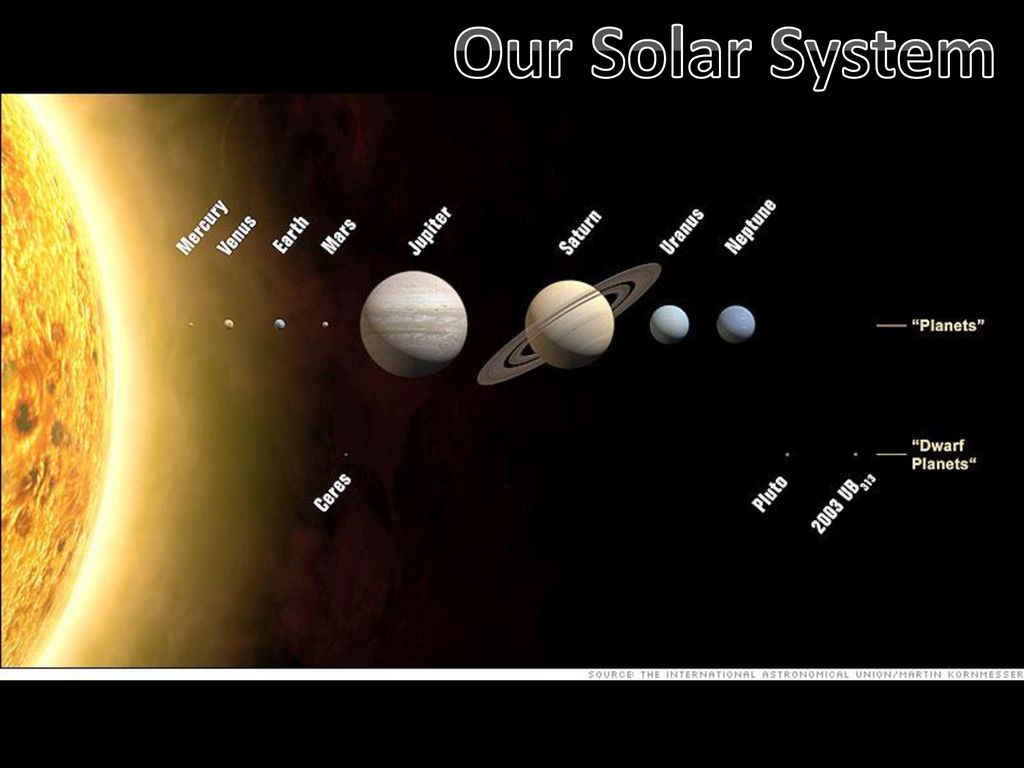
- On a Frosty Evening Climbed Young's Mast Aiming to See an Unfamiliar Port.
- Mom Always Forbade Me Young Pathfinder to Know the Names of the Planets.
- The Sea Wolf Tortured the Young Jung, Completely Tired the Unfortunate Guy.
- We'll Meet Tomorrow, My Young Companion, At The New Planet.
- Wise Sorceress Golden-domed Fashionista of the Southern Countries Takes a great interest in the Newest Poetry.
- We All Know: Many Young Woodchucks Learn the Names of the Planets.
- You Can Fly For Mars By Jewelery Turning Near Our Planet.
- Mom Cooks Strawberry Juice, and Young Son Doesn't Cry Anymore.
- Venya measured the Earth with a Marusina Skirt, Satin and Uranium, He is a rogue.
- A grim venereal disease can briskly defeat a tired nymphomaniac.
- Least Seen Mary of the Southern Sun Smile on the Beach.
- Slowly Carries the Earth Little Peter; The garden is decorated with Unbreakable Plafonds (the mnemonic of the planets by Alexei Golovnin).
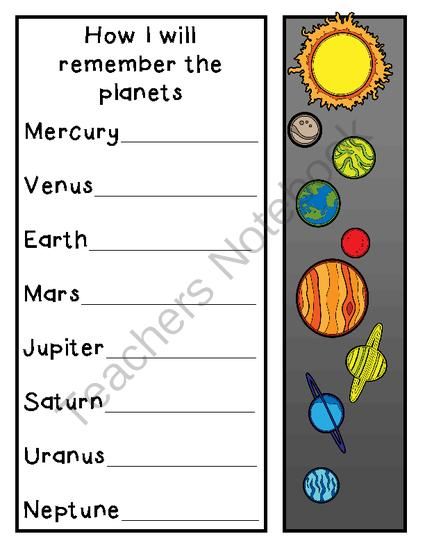
- Dreaming of Getting Married, Little Skirt Remove - Smile Must and Kiss.
Memorizing the order of the planets with the asteroid belt
Masha with Venik the Chalk Land, and Yura Sat at the Spider's Burrow.
That is, the letter "A" was added in this phrase - the Asteroid belt.
Memorization of the planets from the most distant planet (Pluto) to the nearest one (Mercury) to the Sun
Planets It is not difficult to remember the youngest kid, Knowing Venus, Mercury.
Poems for memorizing the planets
The hare darted between the wolves;
In order, all the planets
Any of us will name.
One Mercury, two Venus,
three Earth, four Mars.
Five Jupiters, six Saturns,
Seven Uranus followed by Neptune.
He is the eighth in a row,
and only then
and the ninth planet called Pluto
An astrologer lived on the Moon
He kept records of the planets:
MERCURY - one,
VENUS - two-s,
Three - EARTH,
Four - MARS,
Five - JUPITER,
Six - SATURN,
Seven - URANUS,
Eight - NEPTUNE,
Nine - the farthest PLUTO,
Who does not see - get out!
Memory verse for 8 planets without Pluto
Mercury - one, Venus - two-s,
Three - Earth, four - Mars,
Five - Jupiter, six - Saturn,
Seven - Uranus, eighth - Neptune
White verse for memorizing the order of the planets
Measuring the age of the earth is small
the youth of the wretched garden
no fruit
Other ways of memorizing the order of the planets of the solar system for children and adults
Another way to remember the order of the planets is to compare with other, but similar words and compose suggestions using them.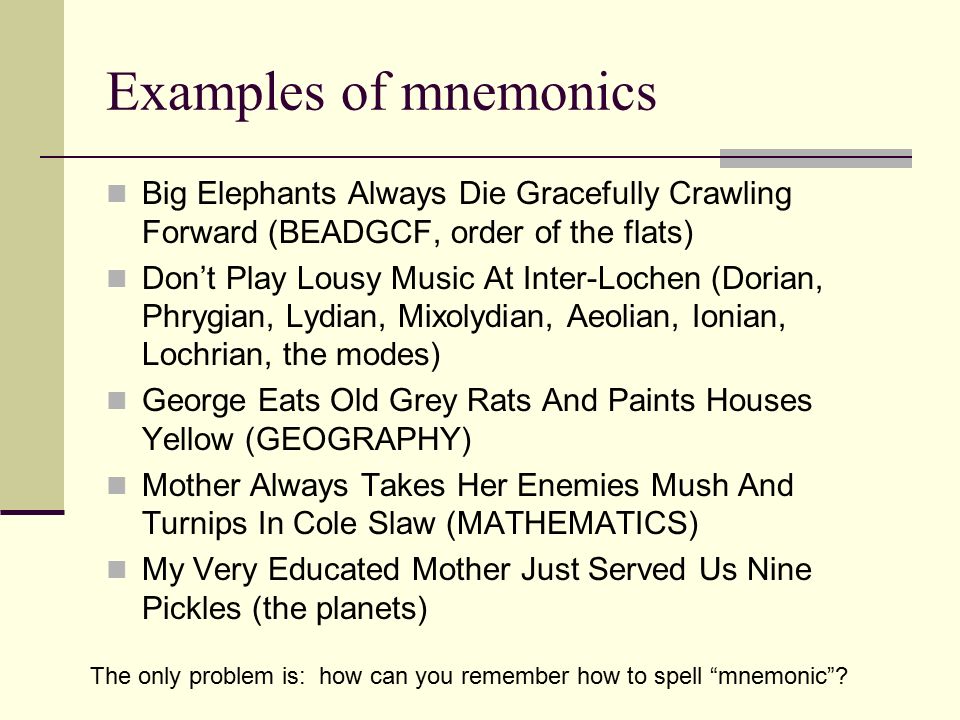
For example: My friend Venus (Venus) on Earth (Earth) fades (Mercury). Because she ate Mars (Mars), which was lying on a music stand (Jupiter), and threw the wrapper into a full, that is, a full urn (Saturn), after shouting "Hurrah" (Uranus). And not a vocational school (Neptune), but she graduated from the institute, later escaping with some rogue (Pluto).
Between the two gods with the letter M: Mercury and Mars, there are 2 women: Venus and Earth. Behind the god Mars is his father - Jupiter. Behind the supreme god Jupiter is a planet unique in its rings - Saturn. In the name Saturn, both Saturn (SAT) and the subsequent planets: Uranus (UR) and Neptune (N) are encrypted. Following them, Pluto is not a planet, but looks like Pluto's dog, looking in bewilderment at the pantheon of Greek gods in front of him.
Acronyms for memorizing the planets
Another way to learn the order of the planets is to use an acronym - that is, an abbreviation that is formed by the first sounds of words in a phrase.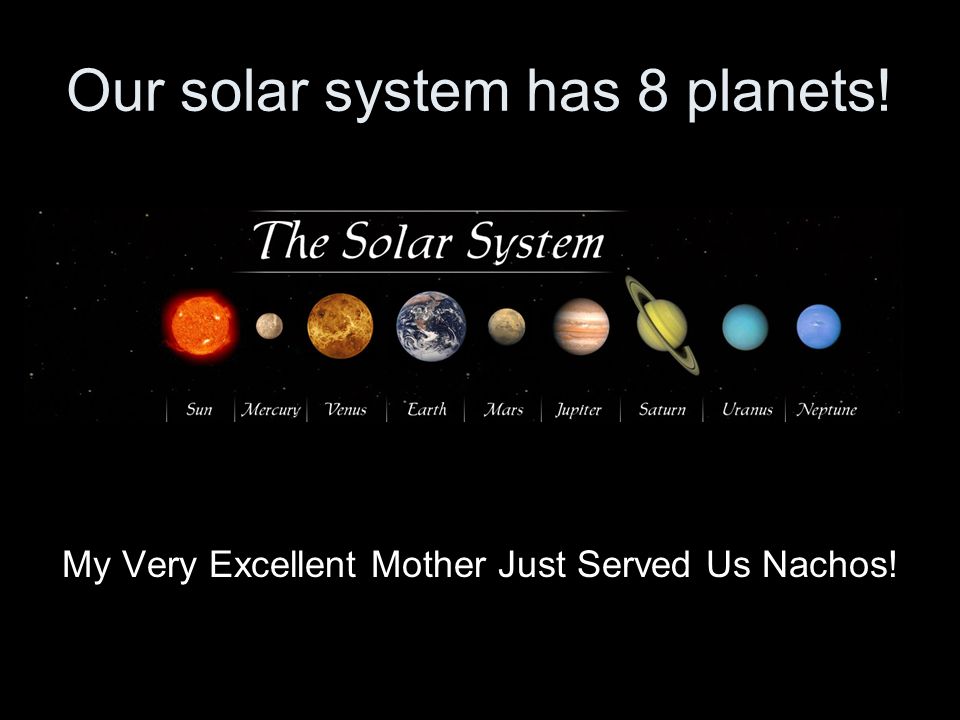 That is, this is a word that can be pronounced together, while it is an abbreviation. To memorize the planets, you can remember the acronym: MeVeZeMa YUSUNP.
That is, this is a word that can be pronounced together, while it is an abbreviation. To memorize the planets, you can remember the acronym: MeVeZeMa YUSUNP.
Do you also know of any interesting memos or original ways of memorizing the planets of the solar system? Write them in the comments.
Toddlers over 4 years old become extremely interested in all the space around them. It is at this age that most children begin to “fall asleep” to moms, dads, grandparents with endless questions about what is happening around. It can be quite difficult to explain some phenomena to young children, and parents simply get lost in the stream of endless children's “Why?”.
One of the most interesting objects for kids is the starry sky. If you draw the child's attention to the bright stars and start talking about the solar system, you can captivate the baby for a long time and hear a huge number of different questions.
For the youngest children, the first knowledge in the field of astronomy will concern the planets of the solar system.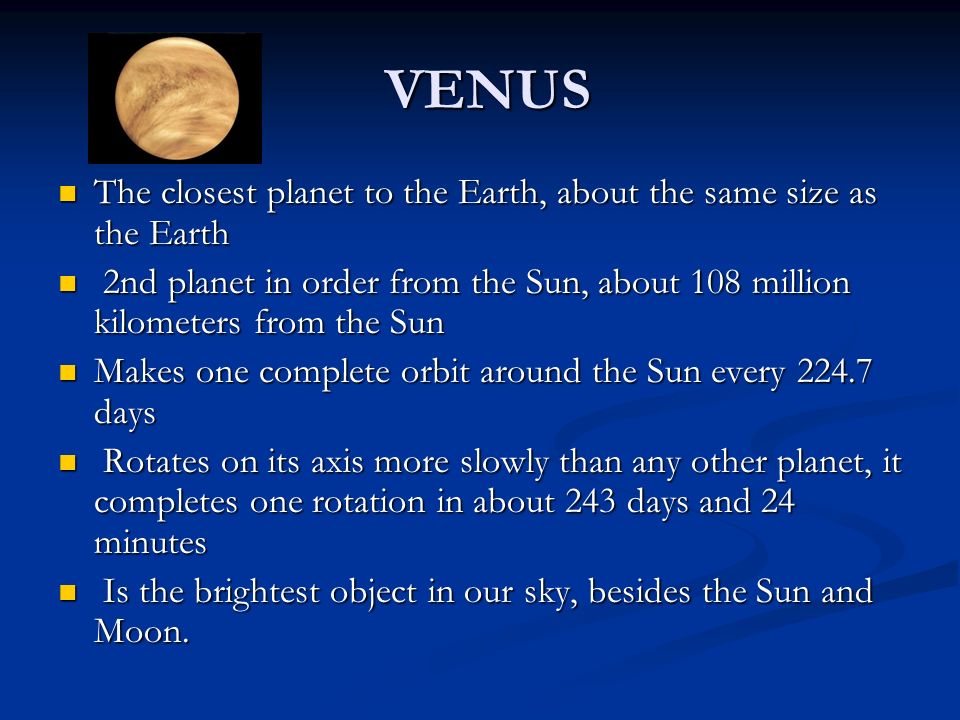 It is about them that you have to tell the child in such a way as to interest him. In this article we will talk about how to do this so that the baby understands what the solar system is and what objects it includes.
It is about them that you have to tell the child in such a way as to interest him. In this article we will talk about how to do this so that the baby understands what the solar system is and what objects it includes.
Exploring the solar system for kids
To explore the solar system with your kids, you need to prepare a model. Some parents purchase a ready-made layout in the store, while others prefer to make it on their own. In any case, the model of the solar system should consist of the Sun and large celestial bodies, or planets. Explain to the child that 8 planets move around the Sun in space, one of which is our Earth. In addition to her, Mercury, Mars, Venus, Neptune, Uranus and Saturn make their journey in orbit.
Even 10 years ago, Pluto was considered a planet, but today modern scientists consider it only a large celestial body. In order for the child to quickly remember the names of the planets and their order in the solar system, you can use the following rhyme:
In order all the planets
Name any of us:
One - Mercury,
Two - Venus,
Three - Earth,
Four - Mars.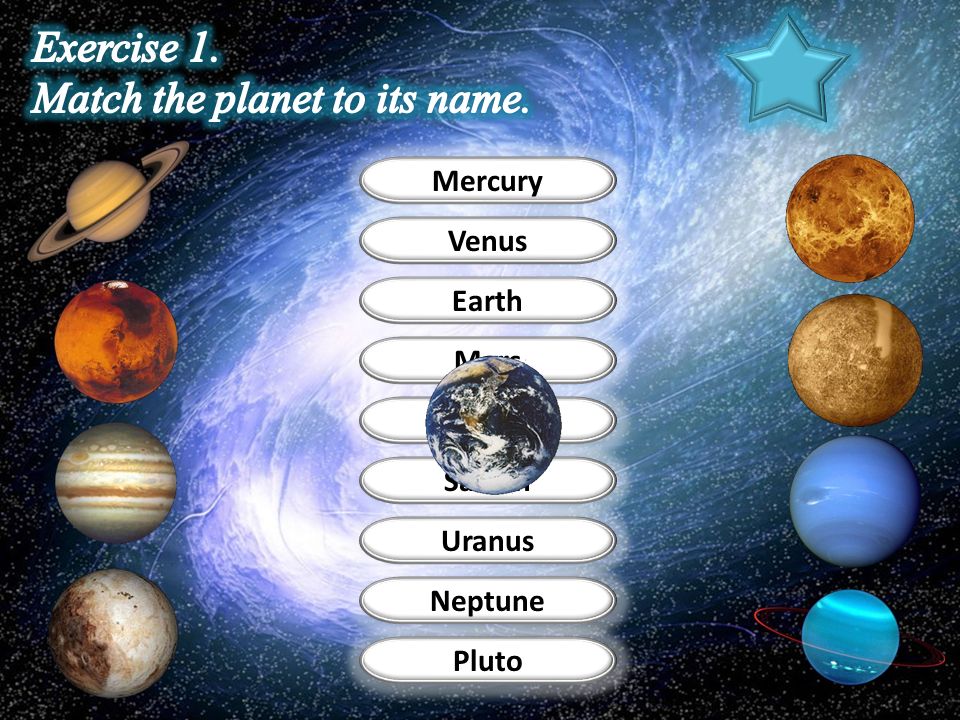
Five - Jupiter,
Six - Saturn,
Seven - Uranus,
Next is Neptune.
A story about the planets of the solar system for children can be constructed as follows:
People have been studying the planets since ancient times. All of them move around the Sun, including our Earth. The inner planets of the terrestrial group are located closer to the Sun. They have a hard surface and high density. At the center of the inner planets is a liquid core. This category includes Earth, Venus, Mars and Mercury.
Jupiter, Neptune, Saturn and Uranus are much farther from the Sun and much larger than the inner planets, due to which they are called giant planets. They differ from the terrestrial group not only in size, but also in structure - they consist of gas, mainly hydrogen and helium, and do not have a solid surface.
Between Mars and Jupiter there is a belt of small planets - asteroids. They are similar to planets, but have smaller sizes - from a few meters to thousands of kilometers.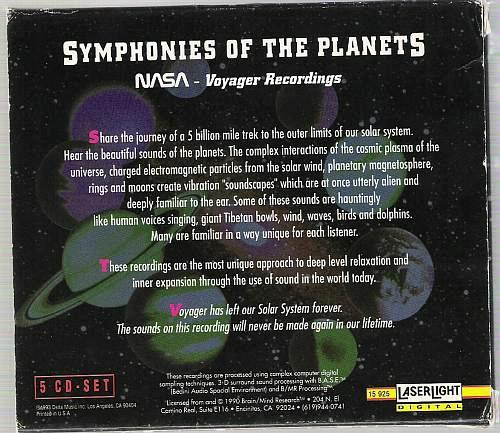 Beyond the orbit of Neptune, in the Kopeyre belt, is Pluto. The Kopeyre belt is many times wider than the asteroid belt, but also consists of small celestial bodies.
Beyond the orbit of Neptune, in the Kopeyre belt, is Pluto. The Kopeyre belt is many times wider than the asteroid belt, but also consists of small celestial bodies.
In addition, satellites are constantly revolving around each planet. Our Earth has only one satellite - the Moon, and there are more than 400 of them in total. Finally, hundreds of thousands of small celestial bodies, such as meteorites, streams of atomic particles, comets, etc., plow through the solar system. Almost the entire mass of the solar system - 99.8% - is concentrated in the sun. Due to the force of its attraction, all objects, including planets, are held in the solar system and revolve around its center. In addition, most celestial bodies also rotate around their own axis.
Planets of the solar system
According to the official position of the International Astronomical Union (IAU), the organization that assigns names to astronomical objects, there are only 8 planets.
Pluto was excluded from the category of planets in 2006.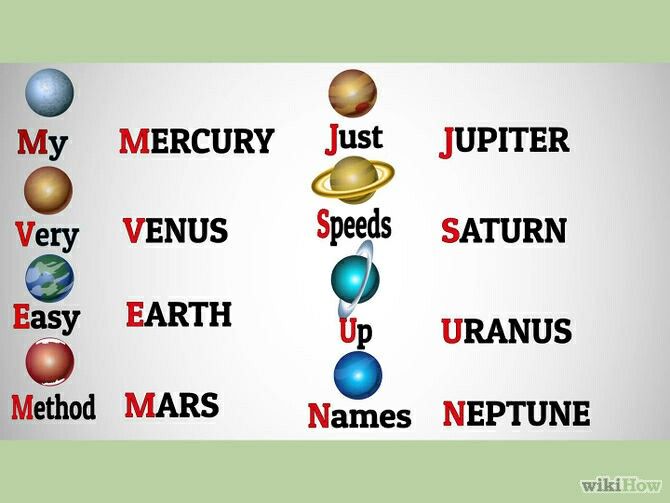 because in the Kuiper belt are objects that are larger / or equal in size to Pluto. Therefore, even if it is taken as a full-fledged celestial body, then it is necessary to add Eris to this category, which has almost the same size with Pluto.
because in the Kuiper belt are objects that are larger / or equal in size to Pluto. Therefore, even if it is taken as a full-fledged celestial body, then it is necessary to add Eris to this category, which has almost the same size with Pluto.
As defined by MAC, there are 8 known planets: Mercury, Venus, Earth, Mars, Jupiter, Saturn, Uranus and Neptune.
All planets are divided into two categories depending on their physical characteristics: terrestrial and gas giants.
Diagram showing planetary positions
Earth-like planets
Mercury
The smallest planet in the solar system has a radius of only 2440 km. The period of revolution around the Sun, for ease of understanding, equated to the earth's year, is 88 days, while Mercury has time to complete a revolution around its own axis only one and a half times. Thus, his day lasts approximately 59earth days. For a long time it was believed that this planet is always turned to the Sun by the same side, since the periods of its visibility from the Earth were repeated with a frequency approximately equal to four Mercury days. This misconception was dispelled with the advent of the possibility of using radar research and conducting continuous observations using space stations. The orbit of Mercury is one of the most unstable; not only the speed of movement and its distance from the Sun change, but also the position itself. Anyone interested can observe this effect.
This misconception was dispelled with the advent of the possibility of using radar research and conducting continuous observations using space stations. The orbit of Mercury is one of the most unstable; not only the speed of movement and its distance from the Sun change, but also the position itself. Anyone interested can observe this effect.
Mercury in color, as seen by the MESSENGER spacecraft
Mercury's proximity to the Sun has caused Mercury to experience the largest temperature fluctuations of any planet in our system. The average daytime temperature is about 350 degrees Celsius, and the nighttime temperature is -170 °C. Sodium, oxygen, helium, potassium, hydrogen and argon have been identified in the atmosphere. There is a theory that it was previously a satellite of Venus, but so far this remains unproven. It has no satellites of its own.
Venus
The second planet from the Sun, the atmosphere of which consists almost entirely of carbon dioxide.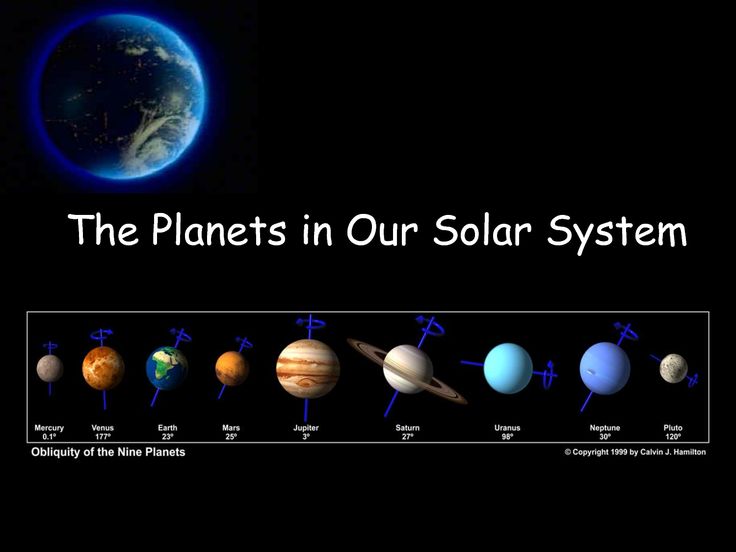 It is often called the Morning Star and the Evening Star, because it is the first of the stars to become visible after sunset, just as before dawn it continues to be visible even when all other stars have disappeared from view. The percentage of carbon dioxide in the atmosphere is 96%, there is relatively little nitrogen in it - almost 4%, and water vapor and oxygen are present in very small amounts.
It is often called the Morning Star and the Evening Star, because it is the first of the stars to become visible after sunset, just as before dawn it continues to be visible even when all other stars have disappeared from view. The percentage of carbon dioxide in the atmosphere is 96%, there is relatively little nitrogen in it - almost 4%, and water vapor and oxygen are present in very small amounts.
Venus in the UV spectrum
Such an atmosphere creates a greenhouse effect, the temperature on the surface because of this is even higher than that of Mercury and reaches 475 ° C. Considered the slowest, the Venusian day lasts 243 Earth days, which is almost equal to a year on Venus - 225 Earth days. Many call it the sister of the Earth because of the mass and radius, the values of which are very close to the earth's indicators. The radius of Venus is 6052 km (0.85% of the earth). There are no satellites, like Mercury.
The third planet from the Sun and the only one in our system where there is liquid water on the surface, without which life on the planet could not develop.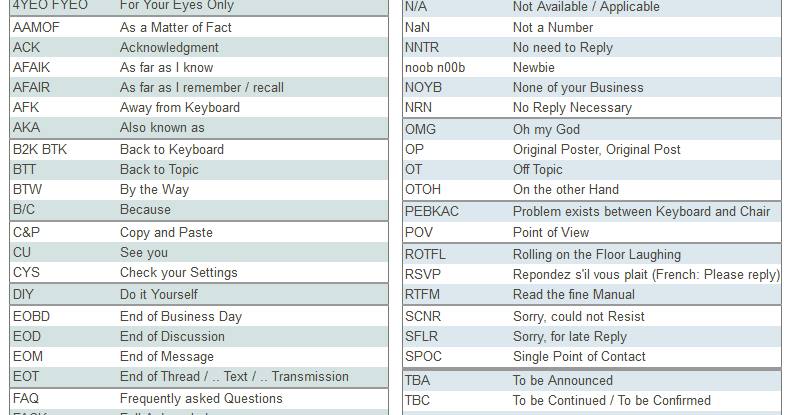 At least life as we know it. The radius of the Earth is 6371 km and, unlike the rest of the celestial bodies in our system, more than 70% of its surface is covered with water. The rest of the space is occupied by the continents. Another feature of the Earth is the tectonic plates hidden under the planet's mantle. At the same time, they are able to move, albeit at a very low speed, which over time causes a change in the landscape. The speed of movement of the planet on it - 29-30 km/s
At least life as we know it. The radius of the Earth is 6371 km and, unlike the rest of the celestial bodies in our system, more than 70% of its surface is covered with water. The rest of the space is occupied by the continents. Another feature of the Earth is the tectonic plates hidden under the planet's mantle. At the same time, they are able to move, albeit at a very low speed, which over time causes a change in the landscape. The speed of movement of the planet on it - 29-30 km/s
Our planet from space
One rotation around its axis takes almost 24 hours, and a complete orbit lasts 365 days, which is much longer compared to the nearest neighboring planets. The Earth day and year are also taken as a standard, but this is done only for the convenience of perceiving time intervals on other planets. The Earth has one natural satellite, the Moon.
Mars
The fourth planet from the Sun, known for its rarefied atmosphere. From 1960 years old, Mars is being actively explored by scientists from several countries, including the USSR and the USA.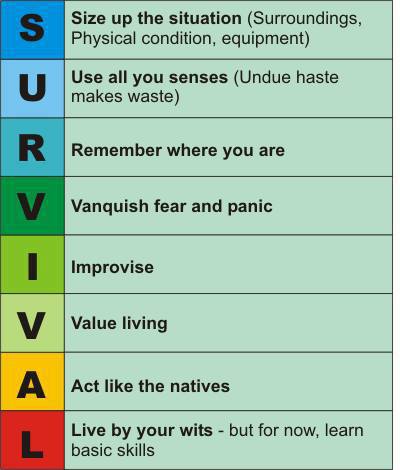 Not all research programs have been successful, but water found in some areas suggests that primitive life exists on Mars, or existed in the past.
Not all research programs have been successful, but water found in some areas suggests that primitive life exists on Mars, or existed in the past.
The brightness of this planet makes it possible to see it from Earth without any instruments. Moreover, once every 15-17 years, during the Opposition, it becomes the brightest object in the sky, eclipsing even Jupiter and Venus.
The radius is almost half that of the earth and is 3390 km, but the year is much longer - 687 days. He has 2 satellites - Phobos and Deimos .
Visual model of the solar system
Attention ! The animation only works in browsers that support the -webkit standard (Google Chrome, Opera or Safari).
-
Sun
The Sun is a star, which is a hot ball of hot gases at the center of our solar system. Its influence extends far beyond the orbits of Neptune and Pluto. Without the Sun and its intense energy and heat, there would be no life on Earth. There are billions of stars, like our Sun, scattered throughout the Milky Way galaxy.
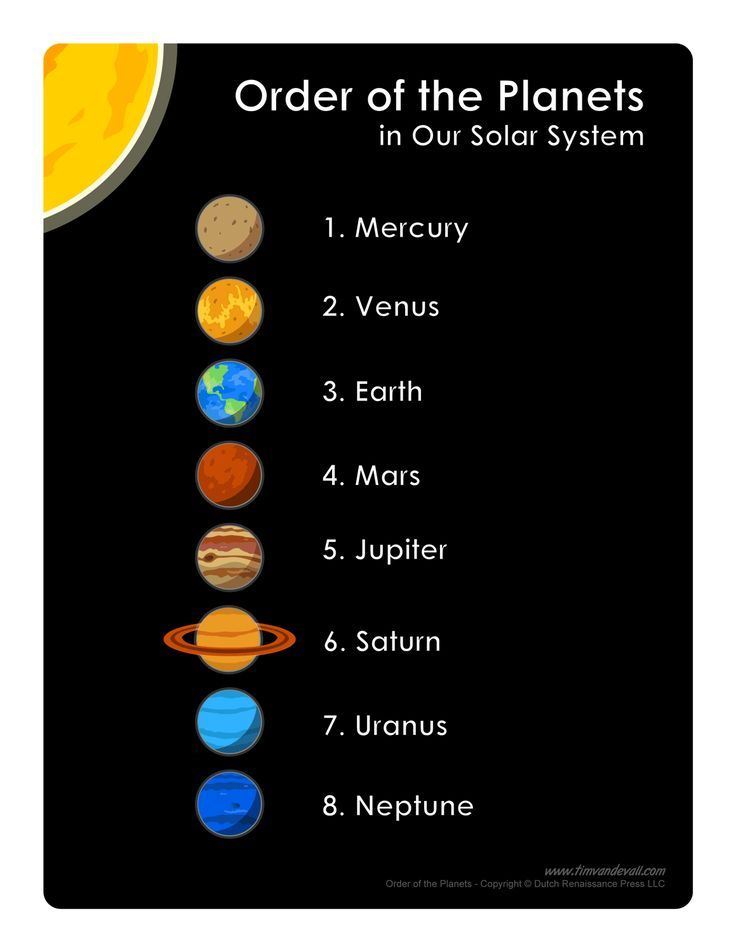
-
Mercury
Sun-scorched Mercury is only slightly larger than Earth's moon. Like the Moon, Mercury is practically devoid of an atmosphere and cannot smooth out the traces of impact from the fall of meteorites, therefore, like the Moon, it is covered with craters. The day side of Mercury is very hot on the Sun, and on the night side the temperature drops hundreds of degrees below zero. In the craters of Mercury, which are located at the poles, there is ice. Mercury makes one revolution around the Sun in 88 days.
-
Venus
Venus is a world of monstrous heat (even more than on Mercury) and volcanic activity. Similar in structure and size to Earth, Venus is covered in a thick and toxic atmosphere that creates a strong greenhouse effect. This scorched world is hot enough to melt lead. Radar images through the mighty atmosphere revealed volcanoes and deformed mountains. Venus rotates in the opposite direction from the rotation of most planets.

-
Earth is an ocean planet. Our home, with its abundance of water and life, makes it unique in our solar system. Other planets, including several moons, also have ice deposits, atmospheres, seasons, and even weather, but only on Earth did all these components come together in such a way that life became possible.
-
Mars
Although details of the surface of Mars are difficult to see from Earth, telescope observations show that Mars has seasons and white spots at the poles. For decades, people have assumed that the bright and dark areas on Mars are patches of vegetation and that Mars might be a suitable place for life, and that water exists in the polar caps. When the Mariner 4 spacecraft arrived at Mars at 1965, many of the scientists were shocked to see pictures of the gloomy planet covered in craters. Mars turned out to be a dead planet. More recent missions, however, have shown that Mars holds many mysteries that have yet to be solved.
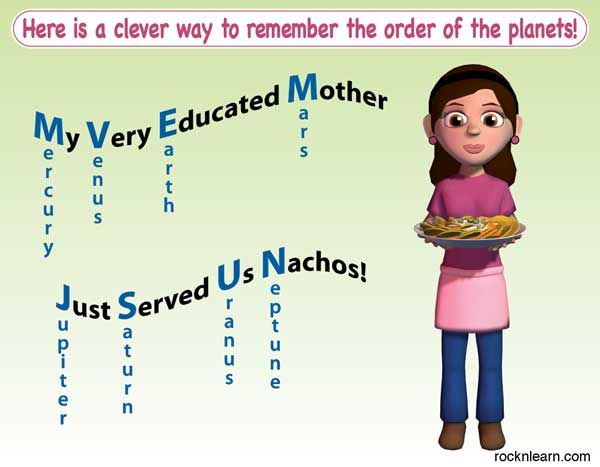
-
Jupiter
Jupiter is the most massive planet in our solar system, has four large moons and many small moons. Jupiter forms a kind of miniature solar system. To turn into a full-fledged star, Jupiter had to become 80 times more massive.
-
Saturn
Saturn is the most distant of the five planets that were known before the invention of the telescope. Like Jupiter, Saturn is made up mostly of hydrogen and helium. Its volume is 755 times that of the Earth. Winds in its atmosphere reach speeds of 500 meters per second. These fast winds, combined with heat rising from the planet's interior, cause the yellow and golden streaks we see in the atmosphere.
-
Uranium
The first planet found with a telescope, Uranus was discovered in 1781 by astronomer William Herschel. The seventh planet is so far from the Sun that one revolution around the Sun takes 84 years.
-
Neptune
Distant Neptune rotates almost 4.
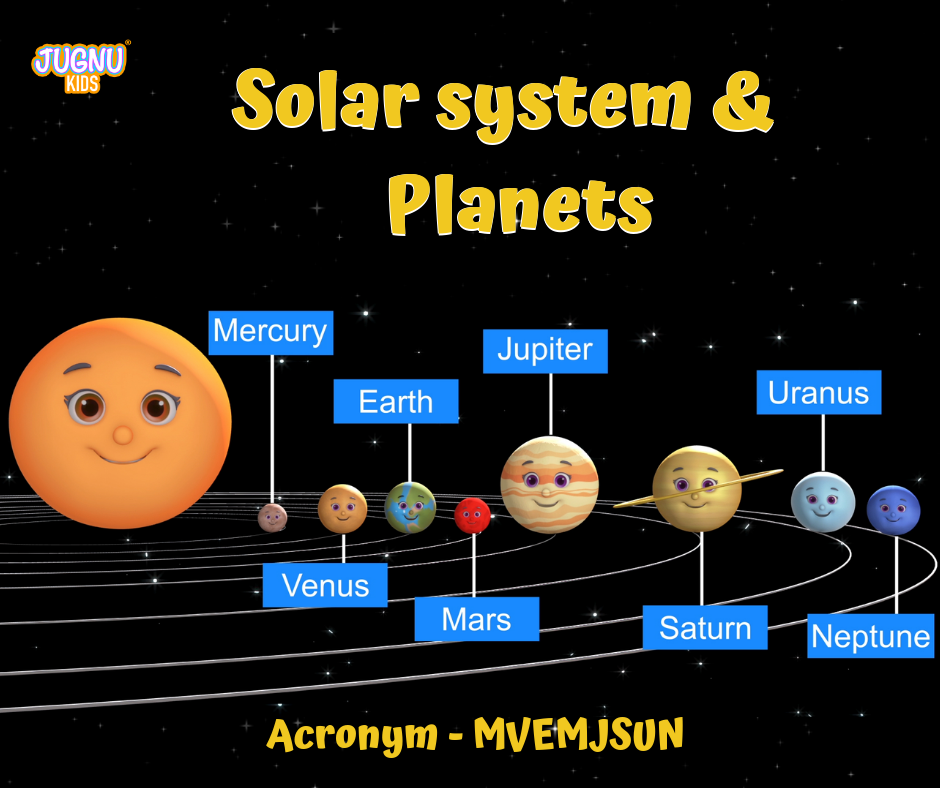 5 billion kilometers from the Sun. It takes 165 years to complete one revolution around the Sun. It is invisible to the naked eye due to its vast distance from Earth. Interestingly, its unusual elliptical orbit intersects with the orbit of the dwarf planet Pluto, which is why Pluto is inside Neptune's orbit for about 20 out of 248 years during which it makes one revolution around the Sun.
5 billion kilometers from the Sun. It takes 165 years to complete one revolution around the Sun. It is invisible to the naked eye due to its vast distance from Earth. Interestingly, its unusual elliptical orbit intersects with the orbit of the dwarf planet Pluto, which is why Pluto is inside Neptune's orbit for about 20 out of 248 years during which it makes one revolution around the Sun. -
Pluto
Tiny, cold and impossibly distant, Pluto was discovered in 1930 and was long thought to be the ninth planet. But after the discovery of Pluto-like worlds even further away, Pluto was reclassified as a dwarf planet in 2006.
Giant planets
There are four gas giants located beyond the orbit of Mars: Jupiter, Saturn, Uranus, Neptune. They are in the outer solar system. They differ in their massiveness and gas composition.
Solar system planets not to scale
Jupiter
The fifth planet from the Sun and the largest planet in our system.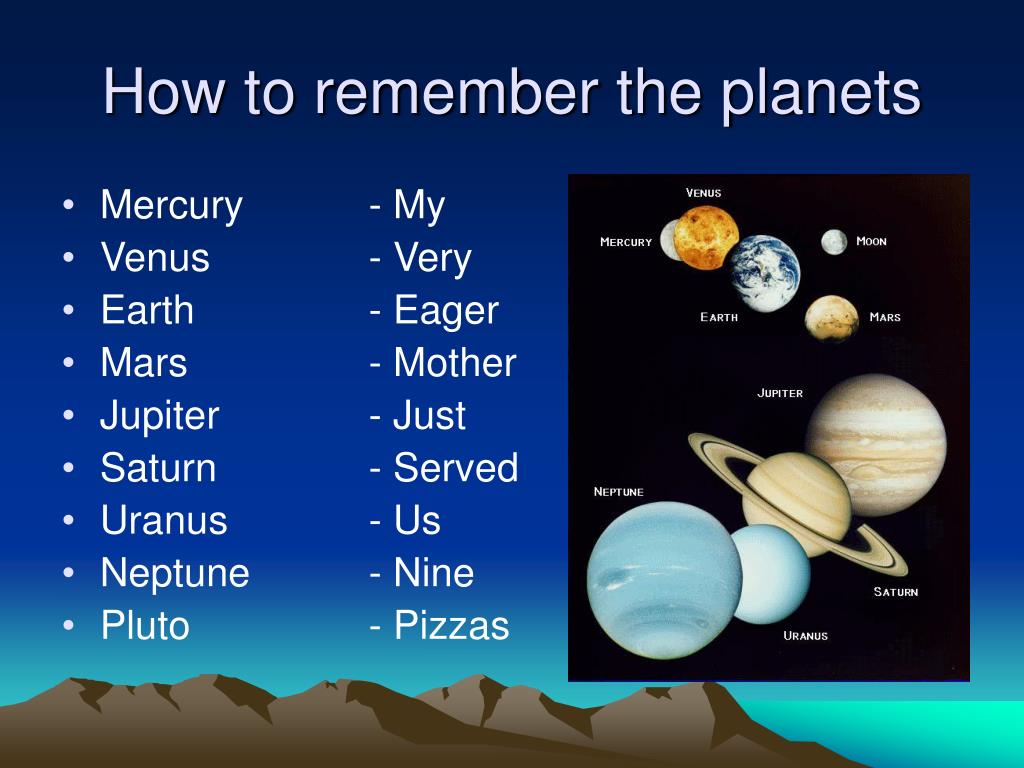 Its radius is 69912 km, it is 19 times larger than the Earth and only 10 times smaller than the Sun. A year on Jupiter is not the longest in the solar system, lasting 4333 Earth days (incomplete 12 years). His own day has a duration of about 10 Earth hours. The exact composition of the planet's surface has not yet been determined, but it is known that krypton, argon and xenon are present on Jupiter in much larger quantities than on the Sun.
Its radius is 69912 km, it is 19 times larger than the Earth and only 10 times smaller than the Sun. A year on Jupiter is not the longest in the solar system, lasting 4333 Earth days (incomplete 12 years). His own day has a duration of about 10 Earth hours. The exact composition of the planet's surface has not yet been determined, but it is known that krypton, argon and xenon are present on Jupiter in much larger quantities than on the Sun.
There is an opinion that one of the four gas giants is actually a failed star. This theory is also supported by the largest number of satellites, of which Jupiter has many - as many as 67. To imagine their behavior in the orbit of the planet, a fairly accurate and clear model of the solar system is needed. The largest of them are Callisto, Ganymede, Io and Europa. At the same time, Ganymede is the largest satellite of the planets in the entire solar system, its radius is 2634 km, which is 8% larger than the size of Mercury, the smallest planet in our system. Io has the distinction of being one of only three moons with an atmosphere.
Io has the distinction of being one of only three moons with an atmosphere.
Saturn
The second largest planet and the sixth largest in the solar system. In comparison with other planets, the composition of chemical elements is most similar to the Sun. The surface radius is 57,350 km, the year is 10,759 days (almost 30 Earth years). A day here lasts a little longer than on Jupiter - 10.5 Earth hours. In terms of the number of satellites, it is not far behind its neighbor - 62 versus 67. The largest satellite of Saturn is Titan, just like Io, which is distinguished by the presence of an atmosphere. Slightly smaller than it, but no less famous for this - Enceladus, Rhea, Dione, Tethys, Iapetus and Mimas. It is these satellites that are the objects for the most frequent observation, and therefore we can say that they are the most studied in comparison with the rest.
For a long time, the rings on Saturn were considered a unique phenomenon, inherent only to him.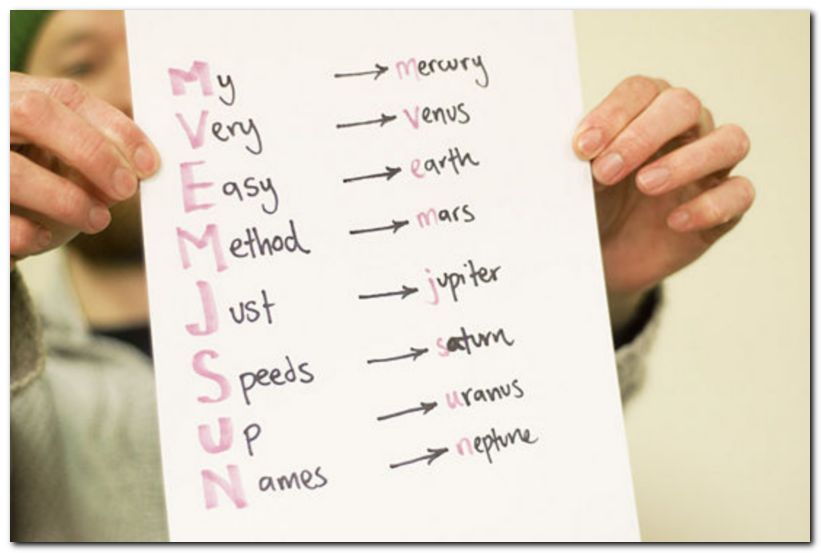 Only recently it was found that all gas giants have rings, but the rest are not so clearly visible. Their origin has not yet been established, although there are several hypotheses about how they appeared. In addition, it was recently discovered that Rhea, one of the satellites of the sixth planet, also has some kind of rings.
Only recently it was found that all gas giants have rings, but the rest are not so clearly visible. Their origin has not yet been established, although there are several hypotheses about how they appeared. In addition, it was recently discovered that Rhea, one of the satellites of the sixth planet, also has some kind of rings.
Our planet Earth, on which we live, is part of the solar system. In the center of the solar system, a hot star, the Sun, shines brightly. Eight major planets revolve around it at different distances from the Sun. One of them, the third in a row, is our Earth.
Each planet has its own orbit in which it moves around the Sun. A complete revolution around the Sun is called a year. On Earth, it lasts 365 days. On planets that are closer to the Sun, a year lasts less, and on those that are farther away, a complete revolution can be several Earth years. The planets also rotate on their axis. One such complete revolution is called a day. On Earth, a day (a revolution around its axis) is approximately 24 hours (more precisely, 23 hours 56 minutes 4 seconds).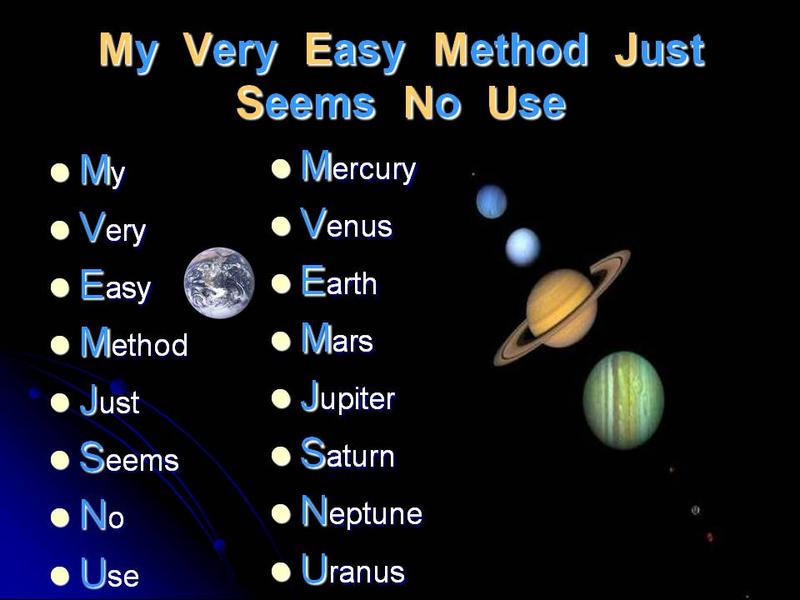
Presentation for children: Planets of the solar system
Sun
A bright star at the center of the solar system. The sun, like a hot fireball, distributes heat to its nearest planets. True, those planets that are very close to the Sun (Mercury and Venus) are very hot, and those that are farther from Mars are very cold, because the warm rays almost do not reach them. But on planet Earth, the temperature turned out to be neither low nor high, very convenient for the appearance and development of life on it.
Mercury
This smallest planet is closest to the Sun. At the same time, almost all the time it turns to the Sun on one side. Therefore, it is very hot on one side of Mercury and very cold on the other.
Venus
The second planet from the Sun.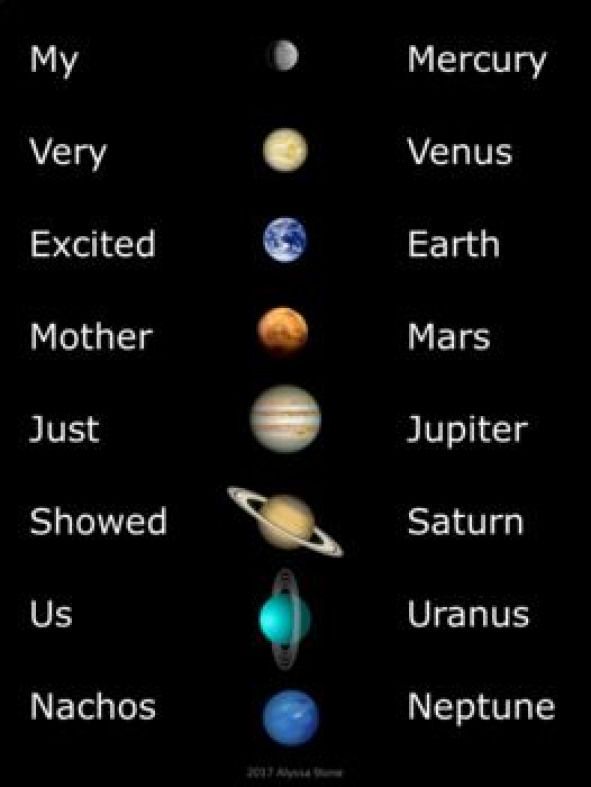 On it, like on Earth, there is an atmosphere, it is such an air shell. Only unlike our earthly one, it does not consist of oxygen, but mostly of carbon dioxide. Therefore, it is impossible to breathe on Venus, and it is very, very hot on its surface. There are no plants, no animals, no bacteria.
On it, like on Earth, there is an atmosphere, it is such an air shell. Only unlike our earthly one, it does not consist of oxygen, but mostly of carbon dioxide. Therefore, it is impossible to breathe on Venus, and it is very, very hot on its surface. There are no plants, no animals, no bacteria.
Earth
This blue planet, third from the Sun, is our common home. Here we live, animals, people, fish, birds - all under one roof. And the roof of the planet Earth consists of an atmosphere in which there is a huge amount of oxygen necessary for life. Here we build our world, write history, and from here we observe other planets and stars. And the planet Earth also has a little girlfriend - the Moon, which is a satellite of the Earth.
Mars
Small red planet, the fourth in a row. There is very little oxygen on it, almost none. There is also almost no water, although scientists are always looking for it, because once there may have been a lot of it on Mars.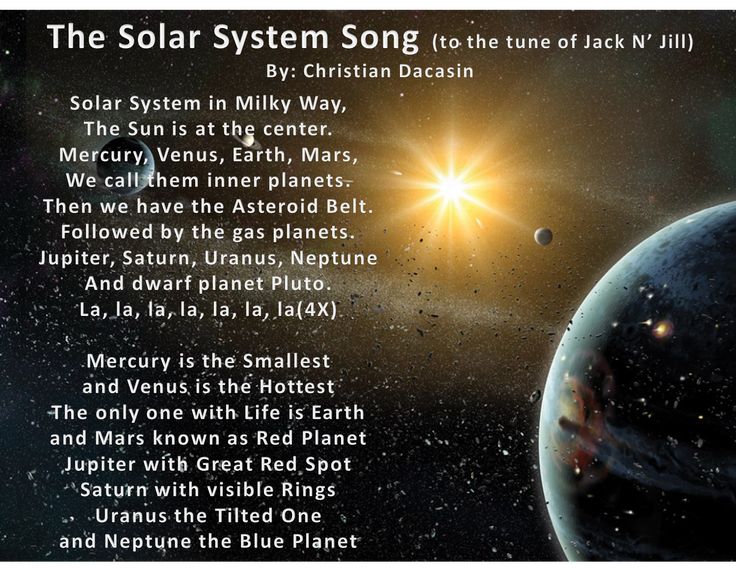 Then, many, many years ago, there could have been rivers, seas and oceans on the planet, but then something happened, and the water disappeared. This mystery is yet to be unraveled.
Then, many, many years ago, there could have been rivers, seas and oceans on the planet, but then something happened, and the water disappeared. This mystery is yet to be unraveled.
Jupiter
The largest, fifth planet in the solar system. Jupiter is made up of gas and is called a gas giant. Storms and whirlwinds of winds constantly occur on its surface, and the planet itself, despite its size, very quickly rotates around its axis, like a top.
Saturn
A beautiful and unusual planet, the sixth from the Sun. Its amazing feature, which can be seen from Earth through a telescope, is a ring around the planet. The ring looks like a disk, but in fact it is not a solid disk, but thousands upon thousands of small stones, asteroid fragments and dust.
Uranus
The mysterious planet, the seventh in a row, which, for unknown reasons, lies on its side and rotates quite differently from other planets. Uranus has an unusual blue color and looks like a round ball with a flat surface.

